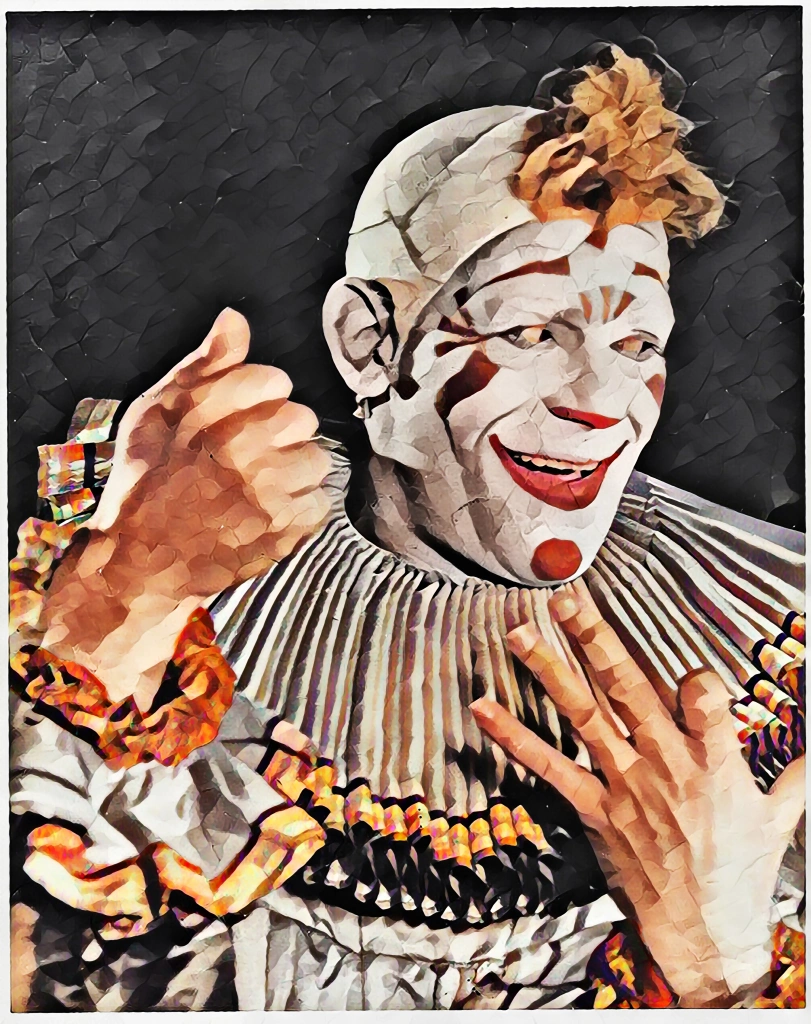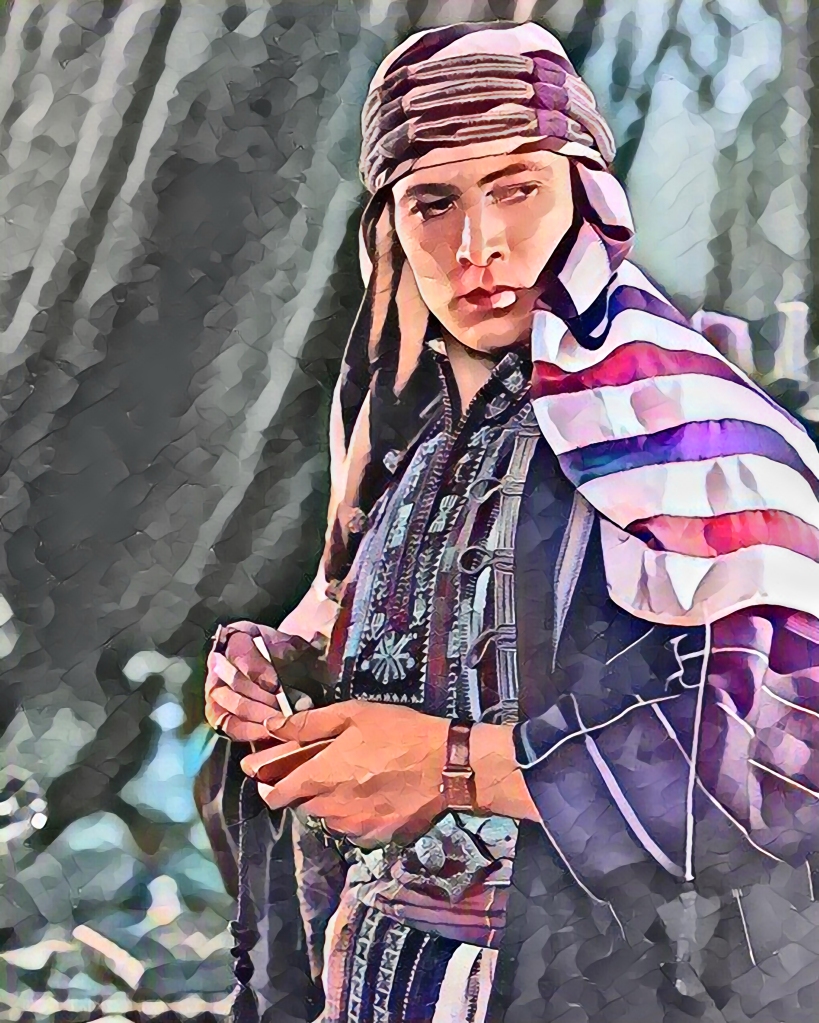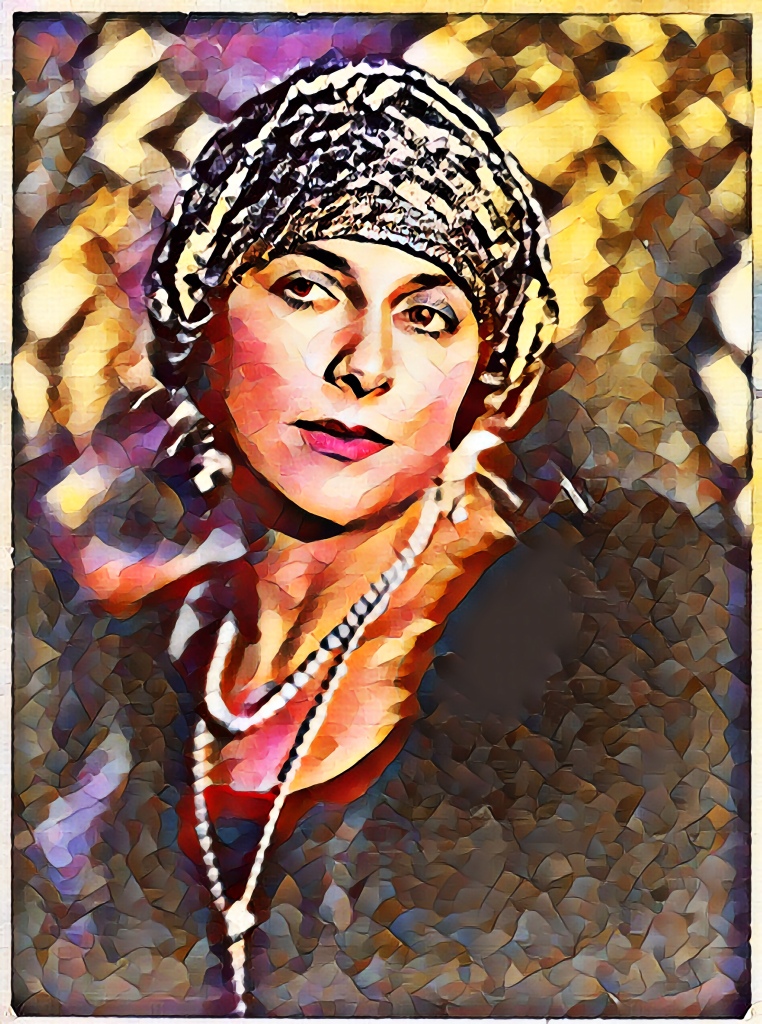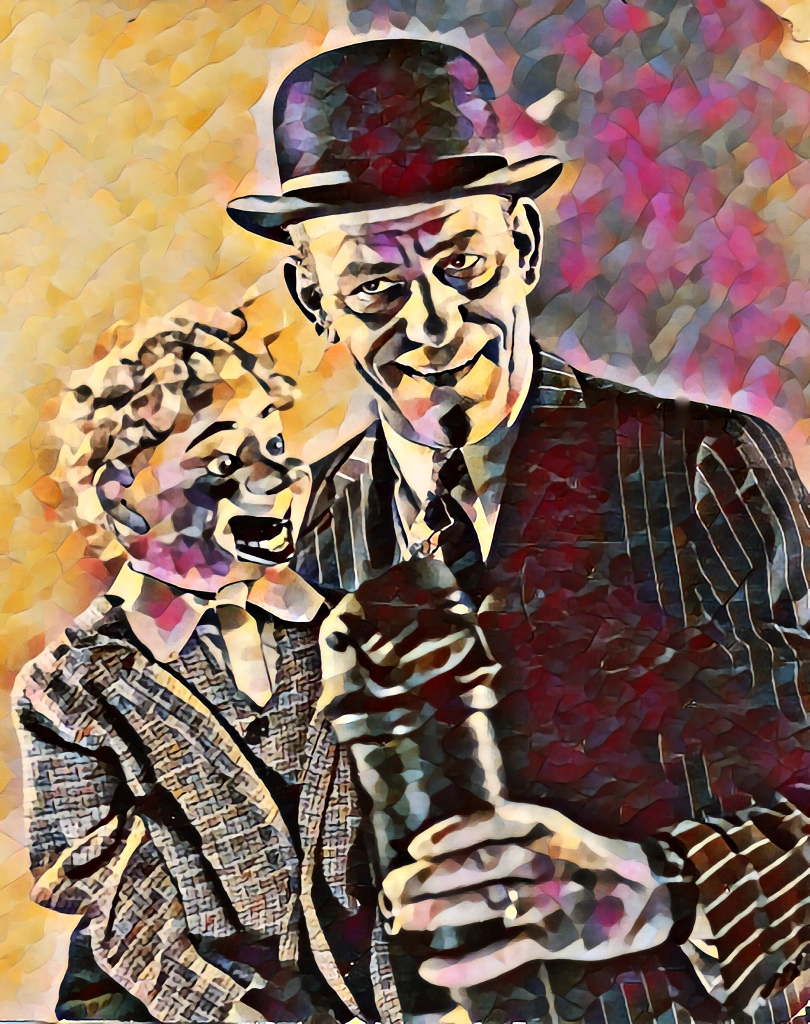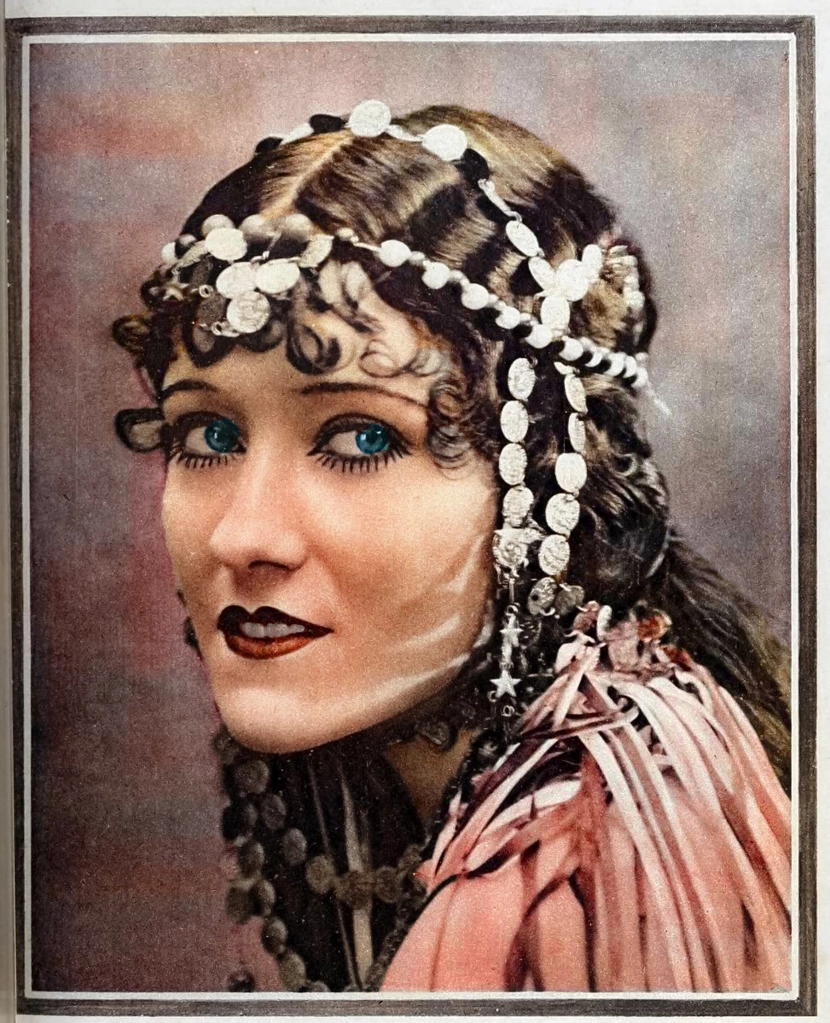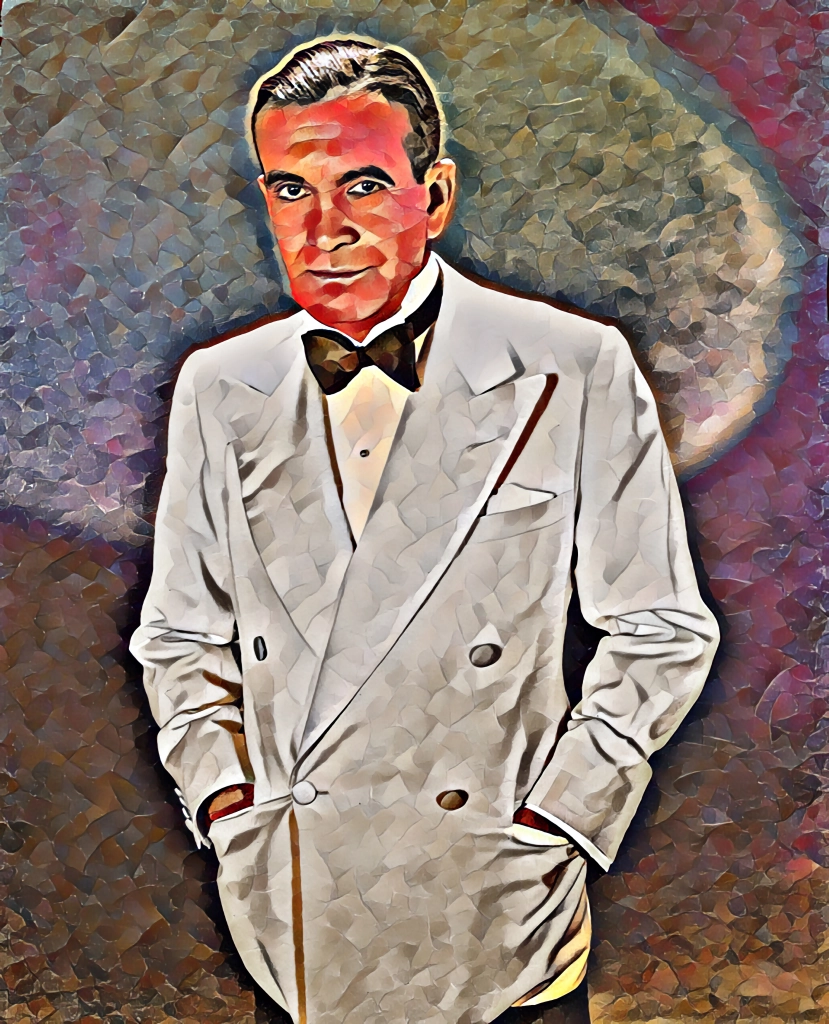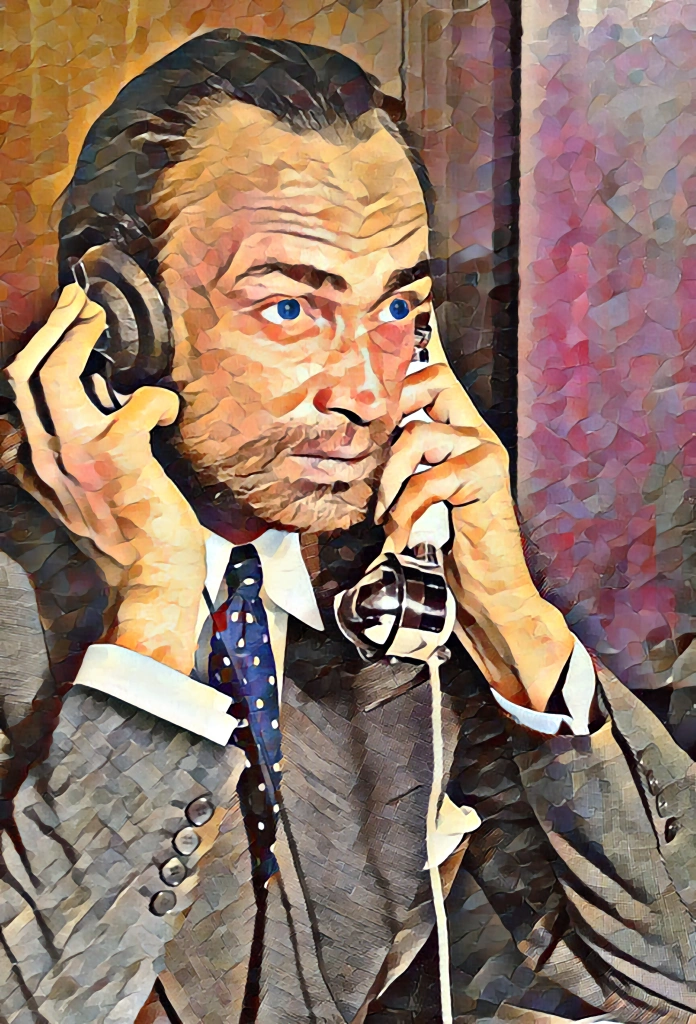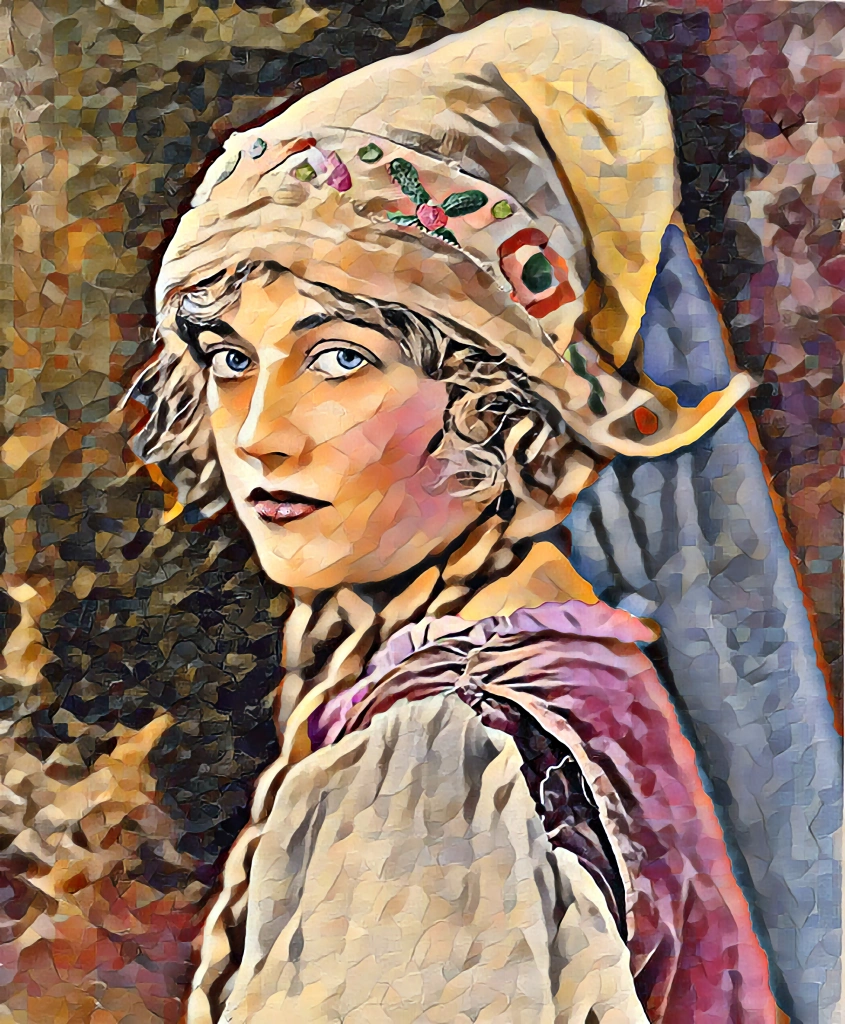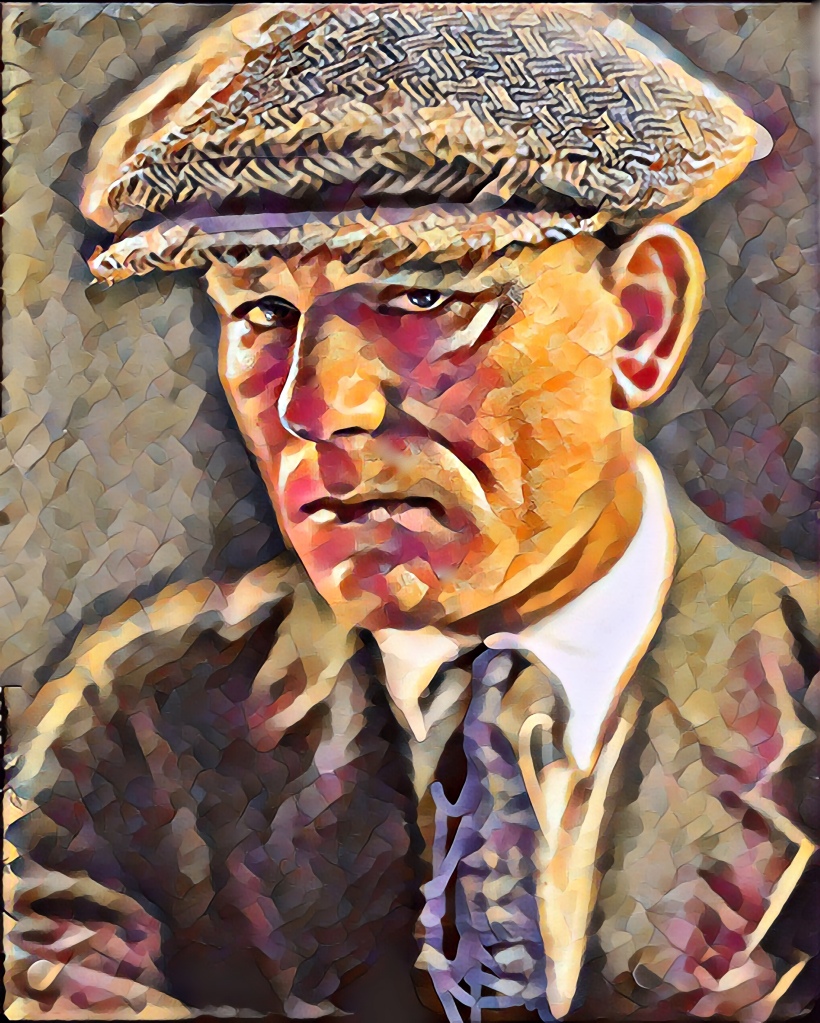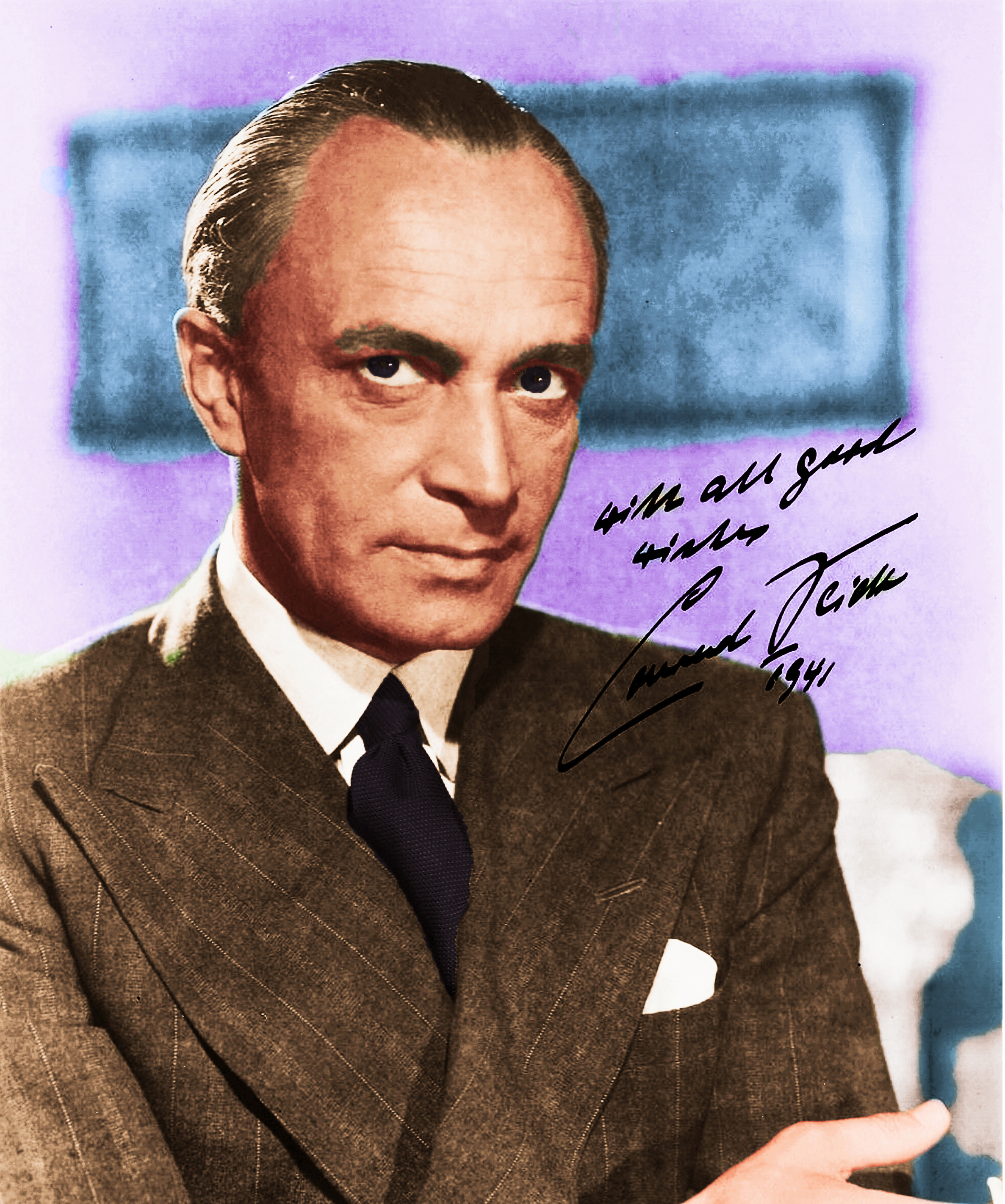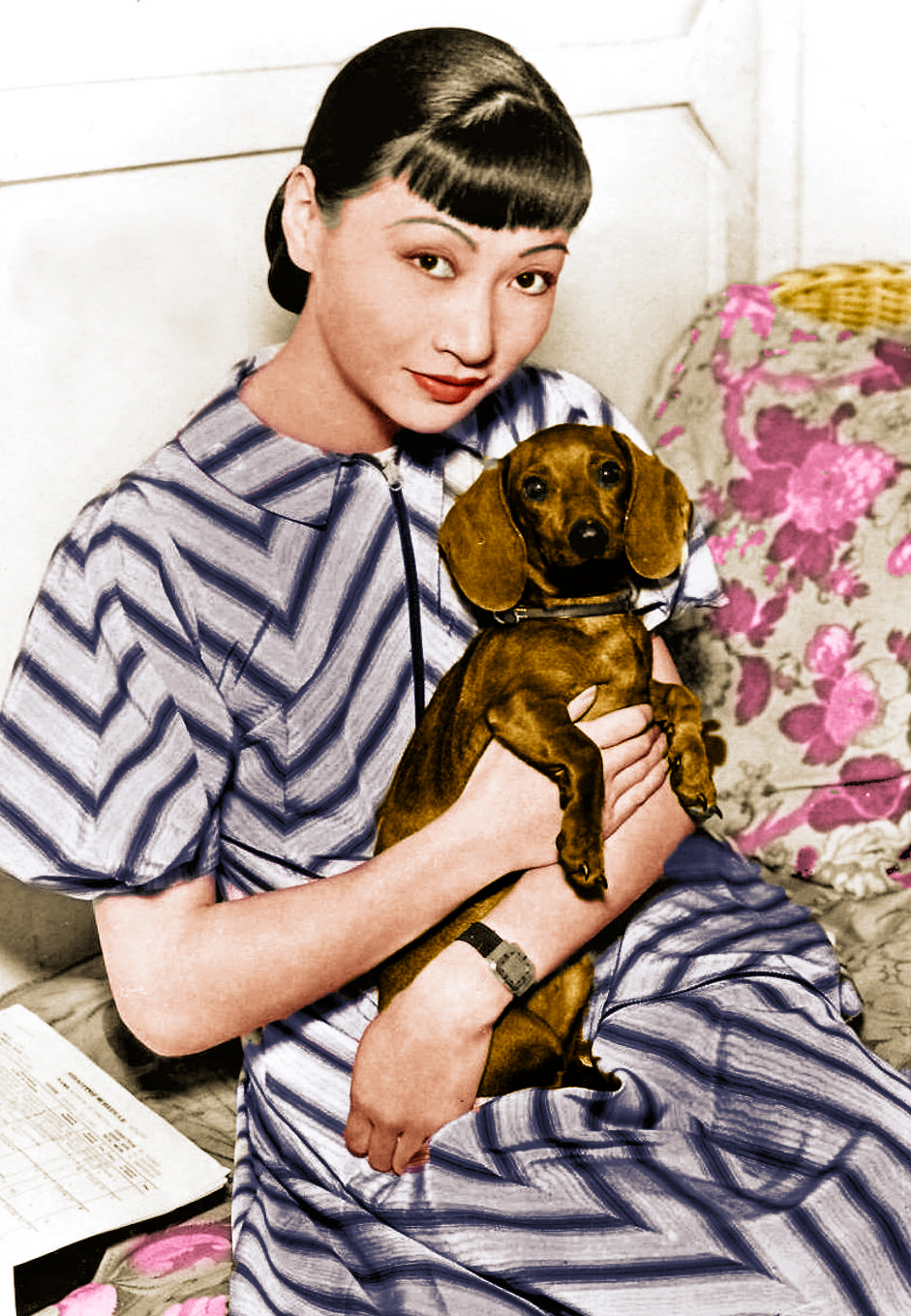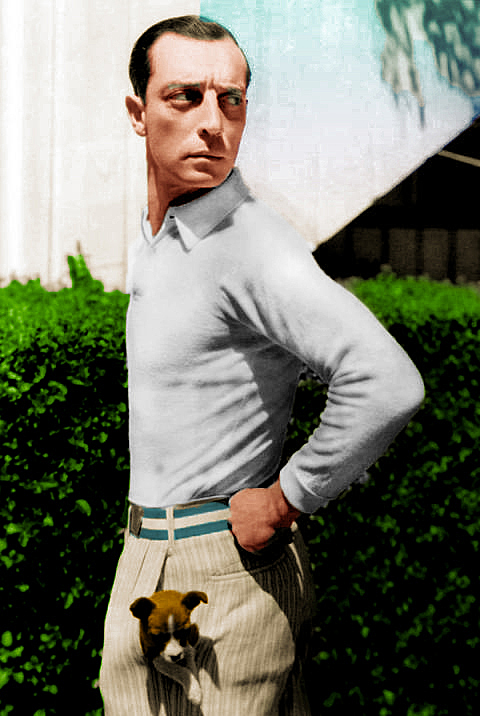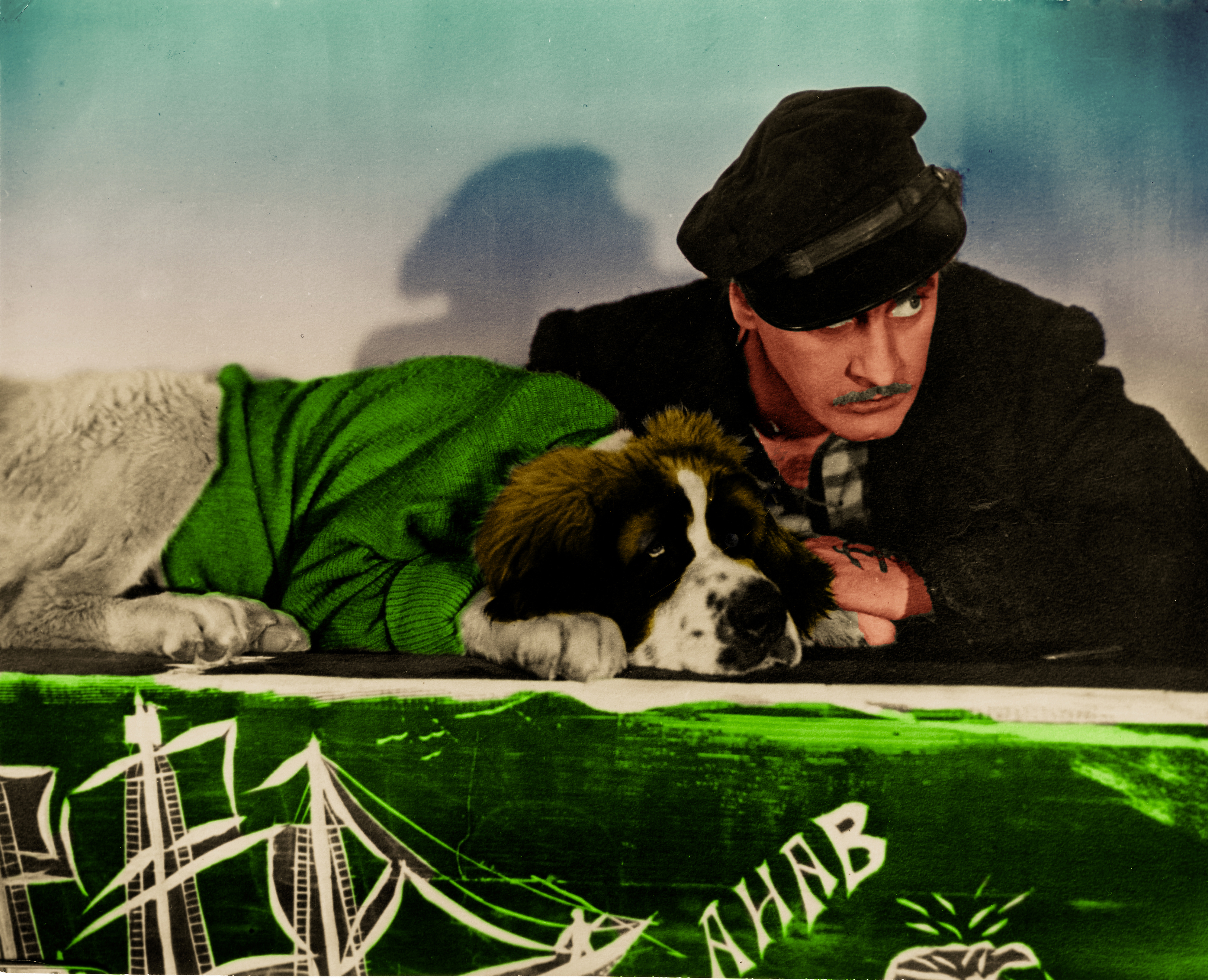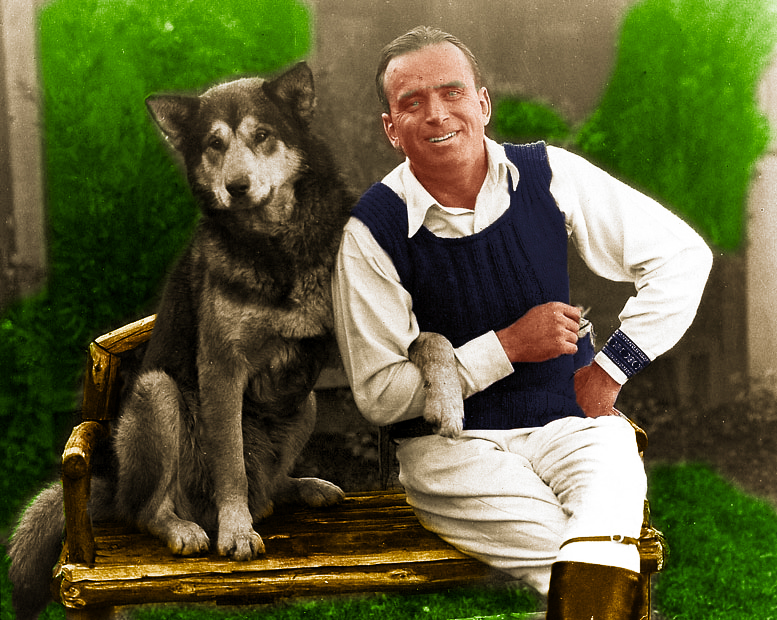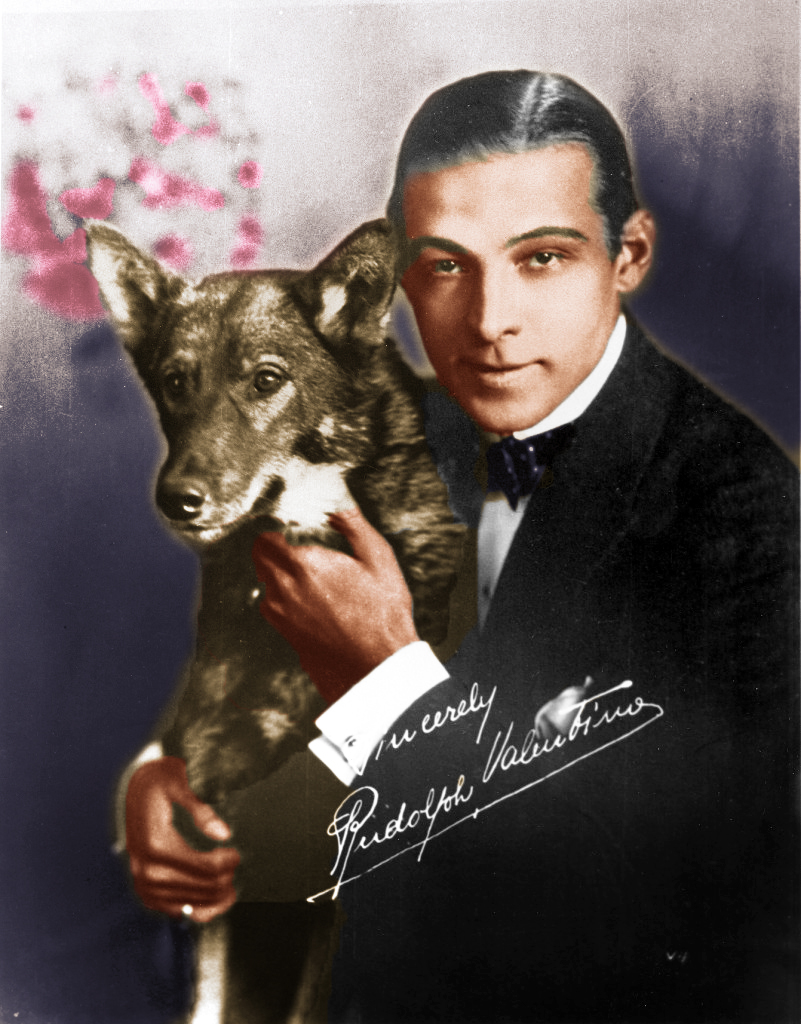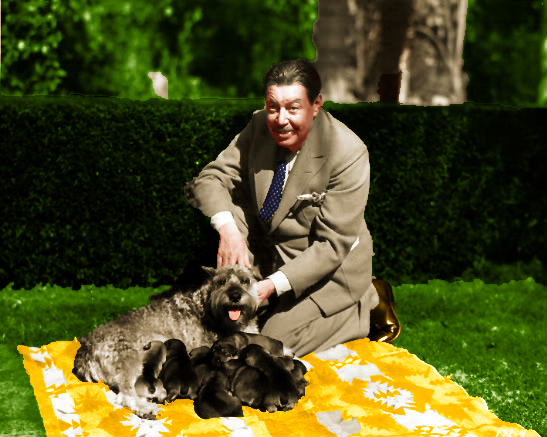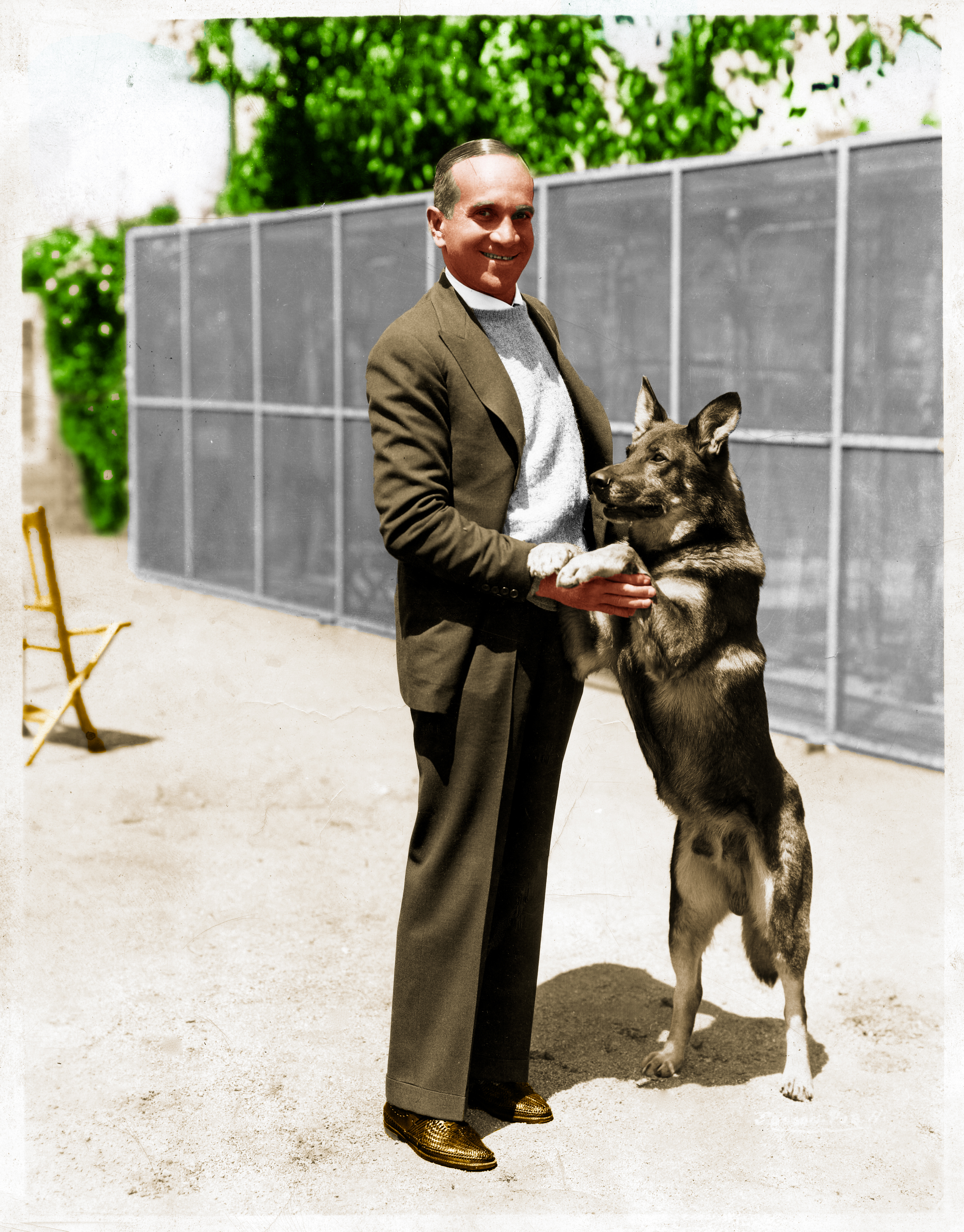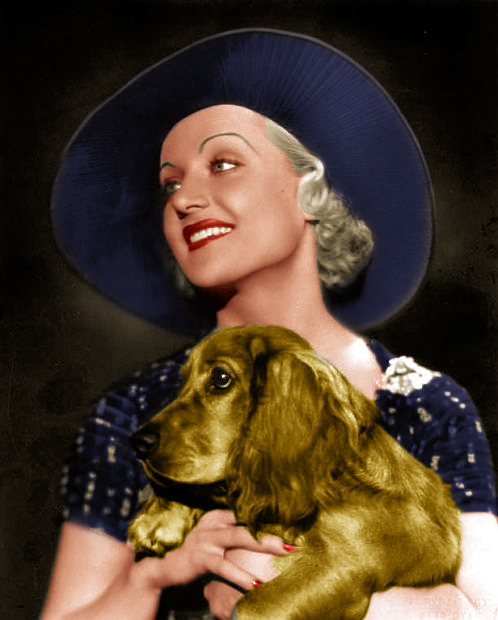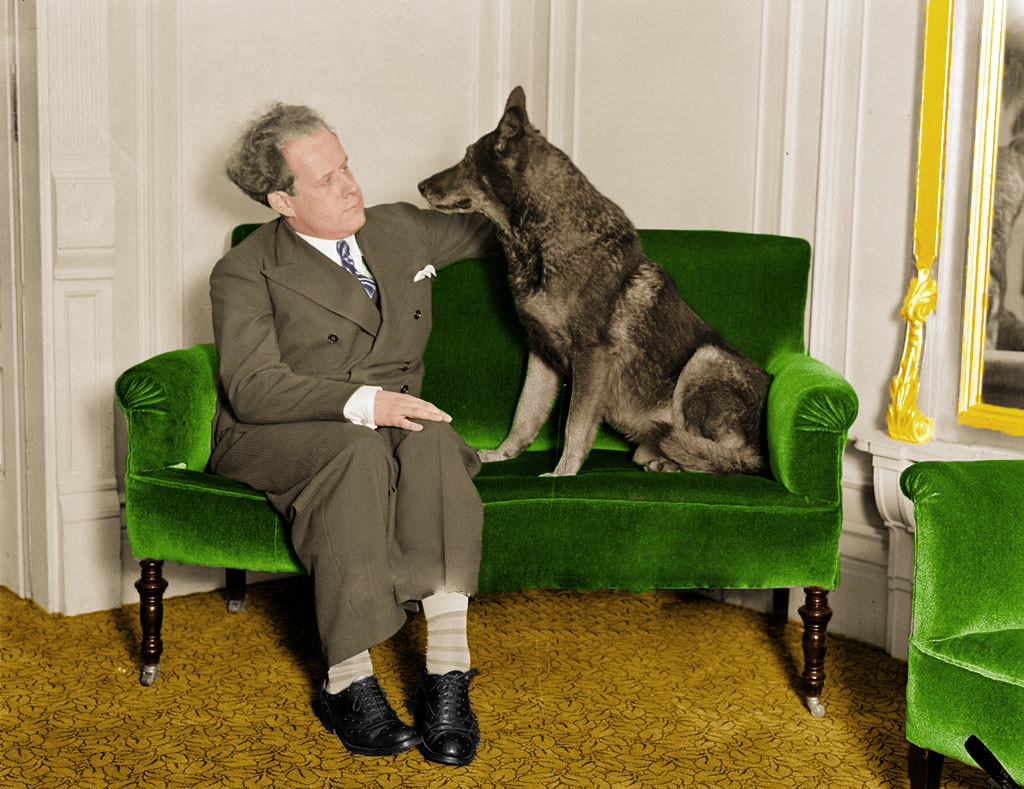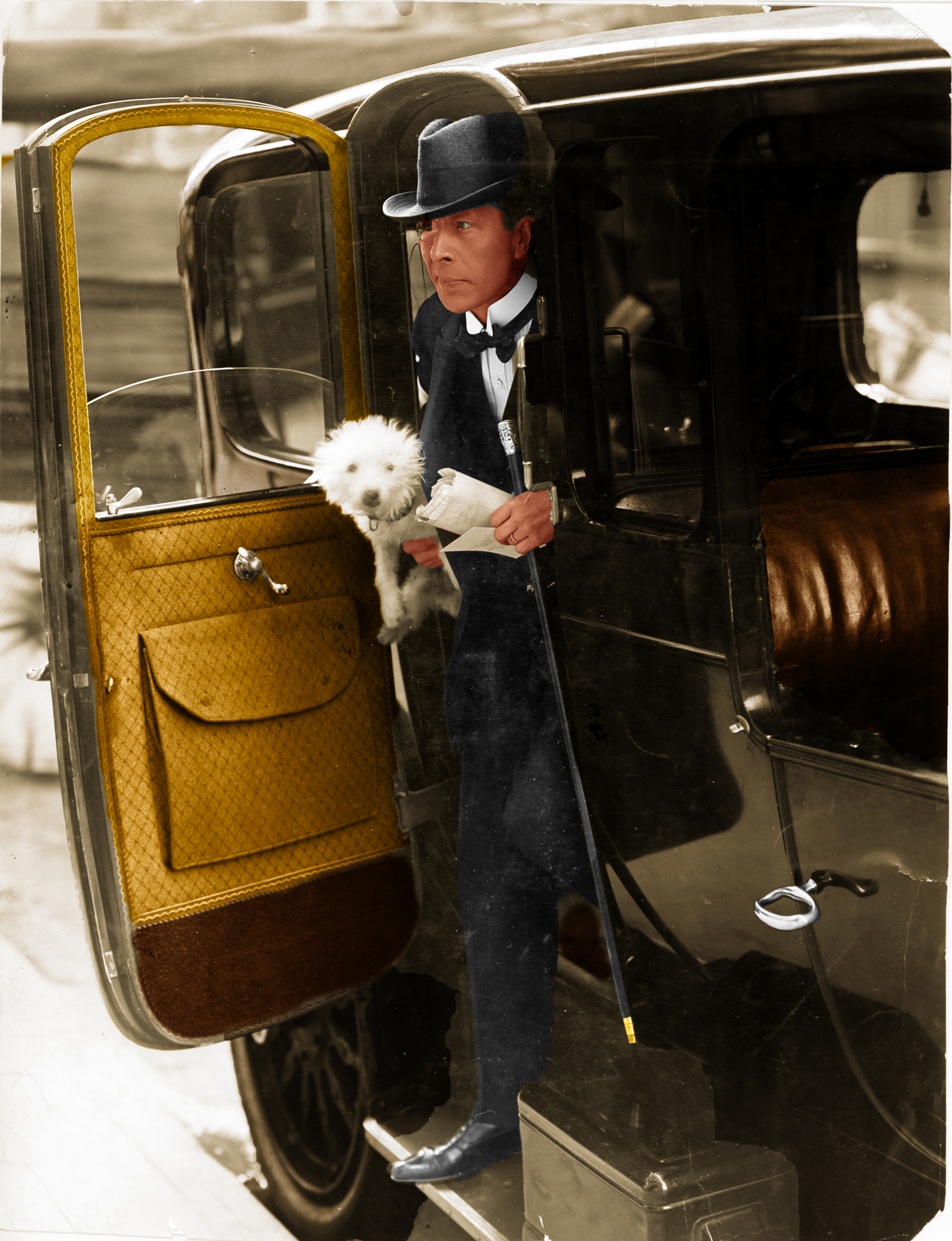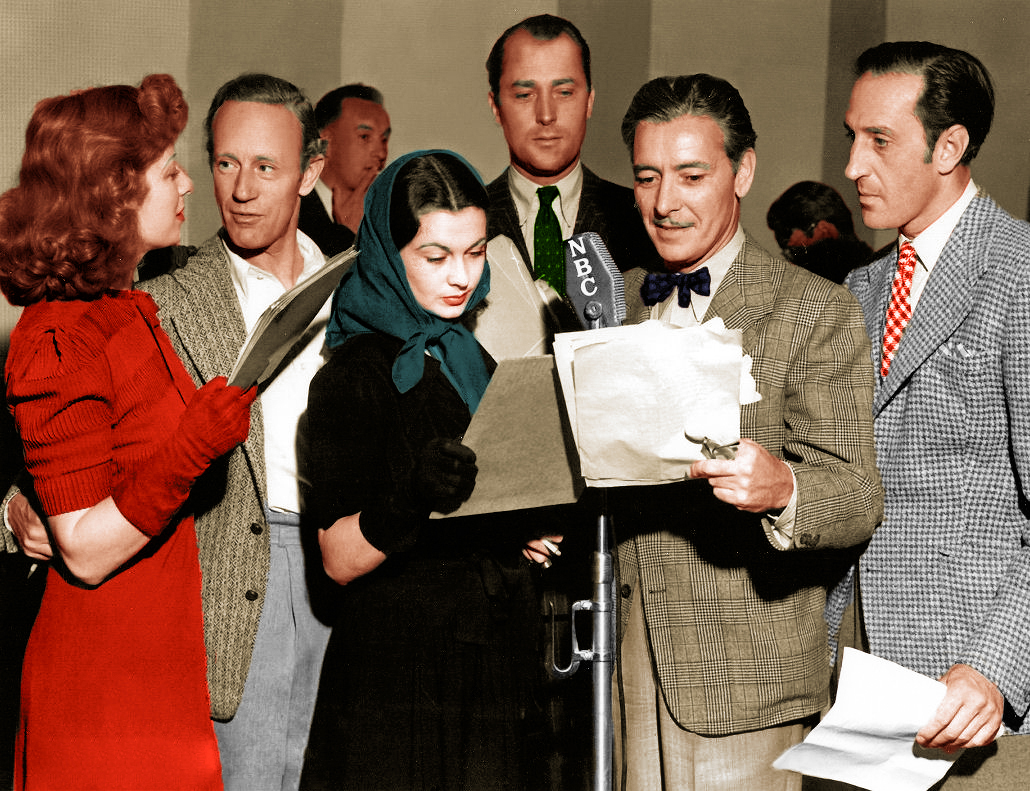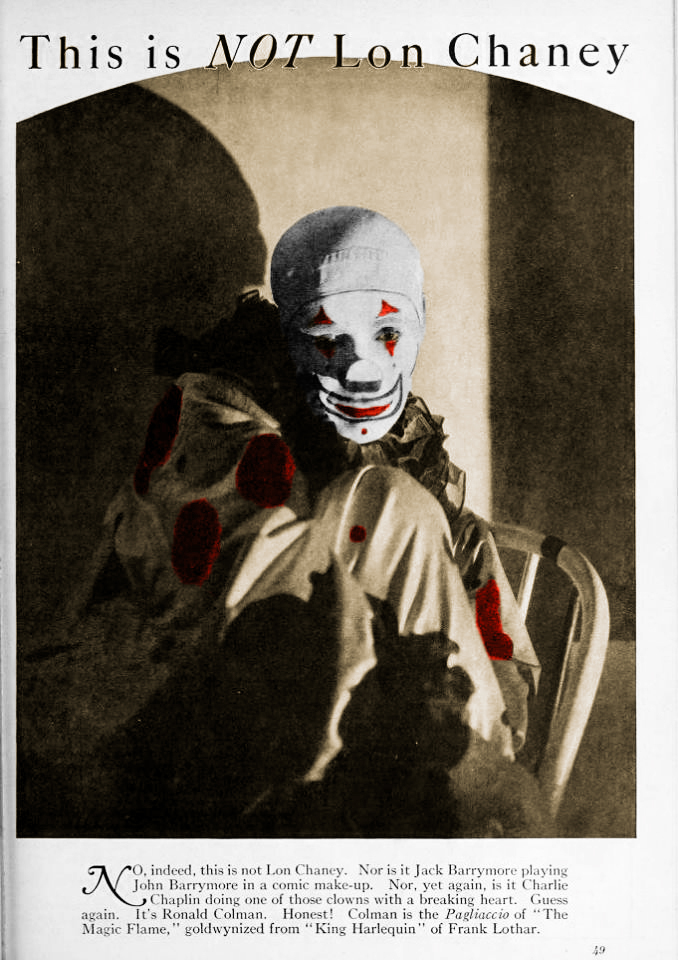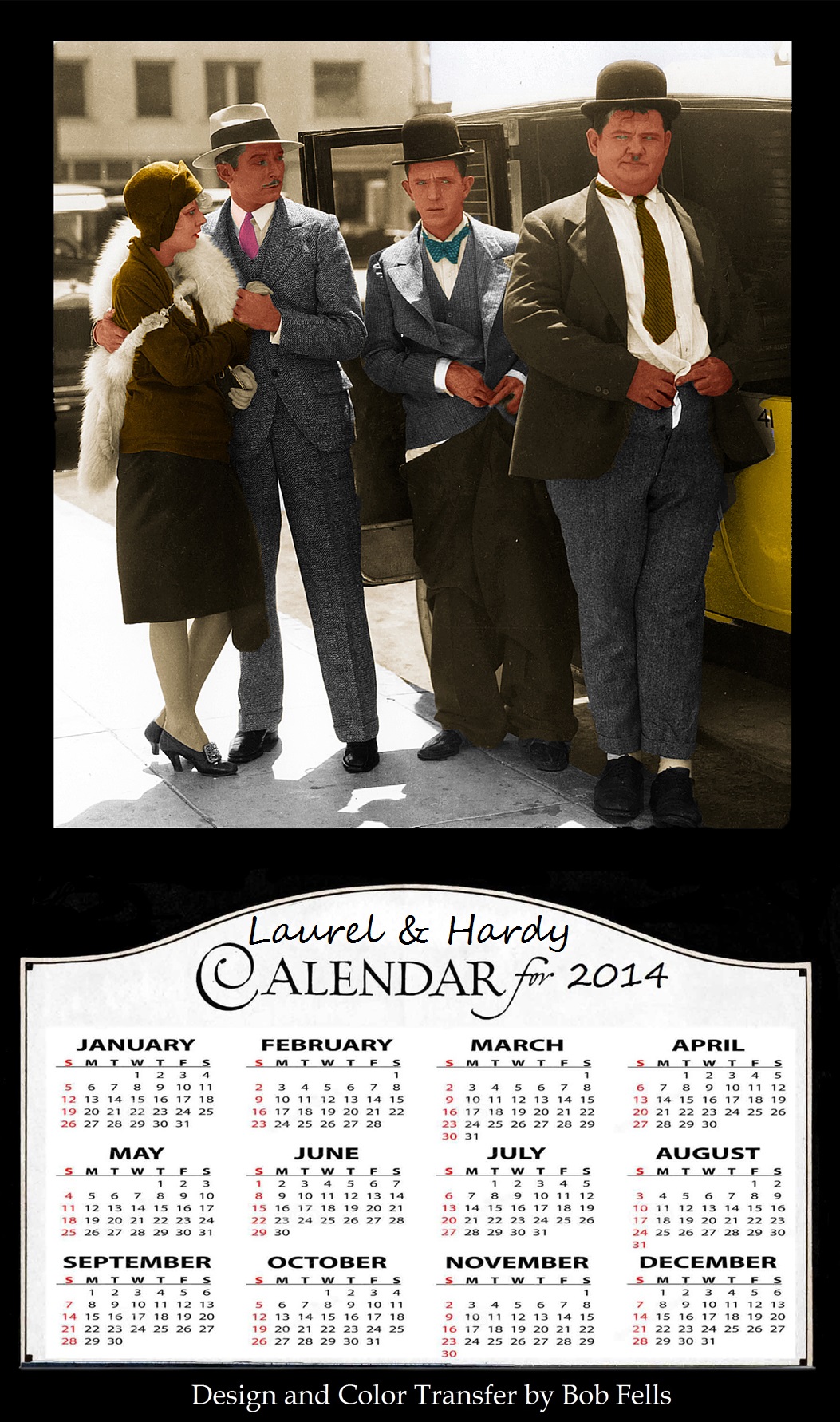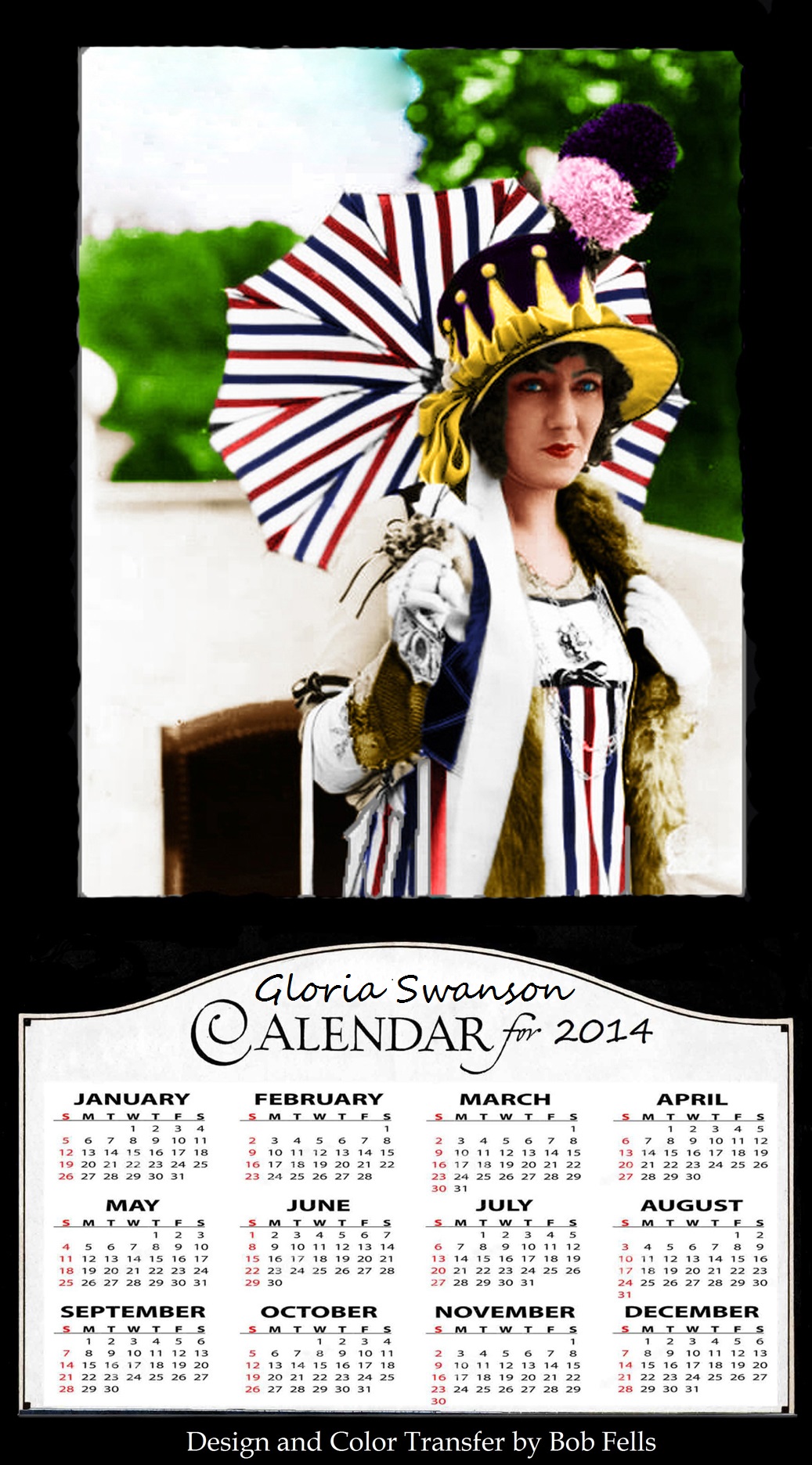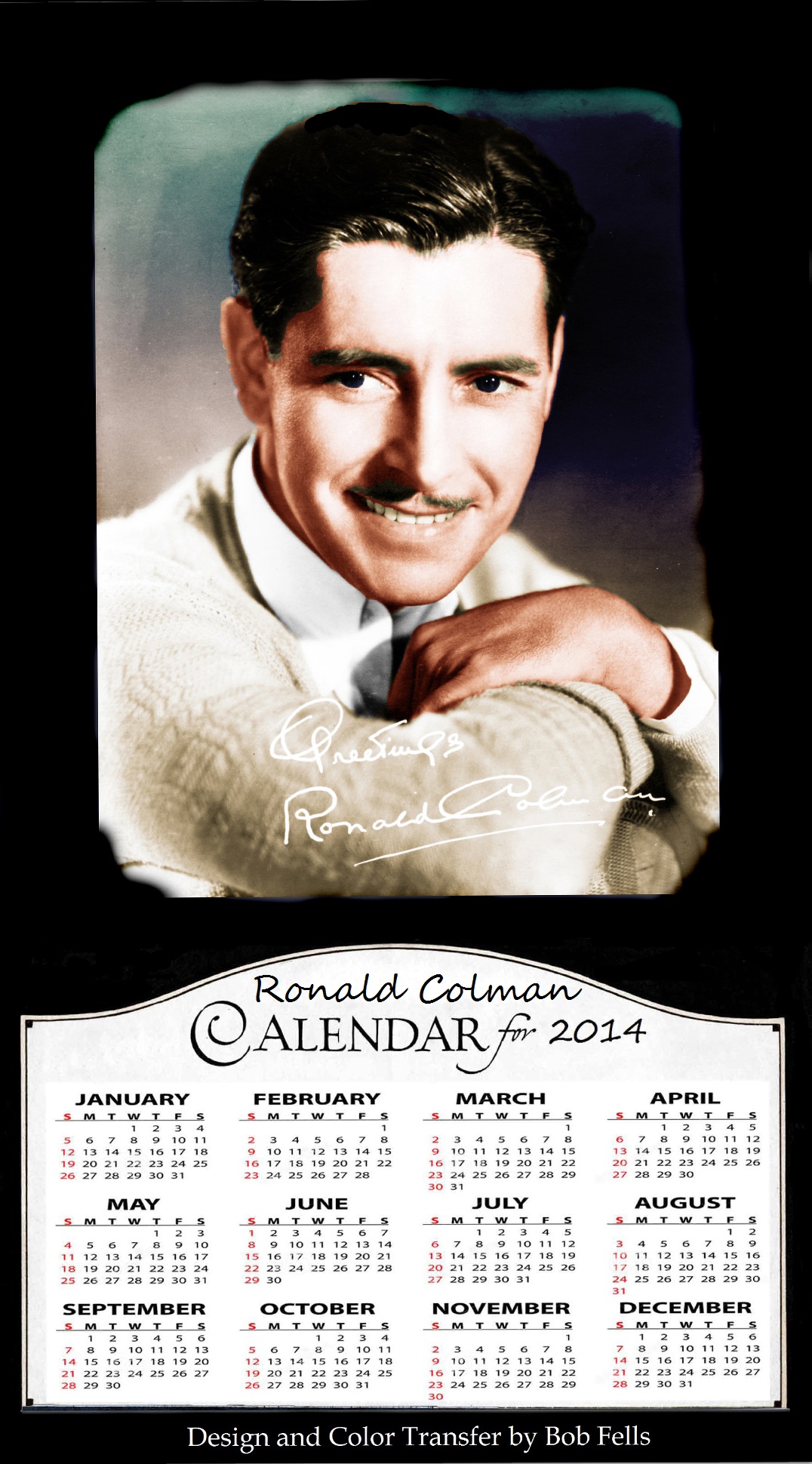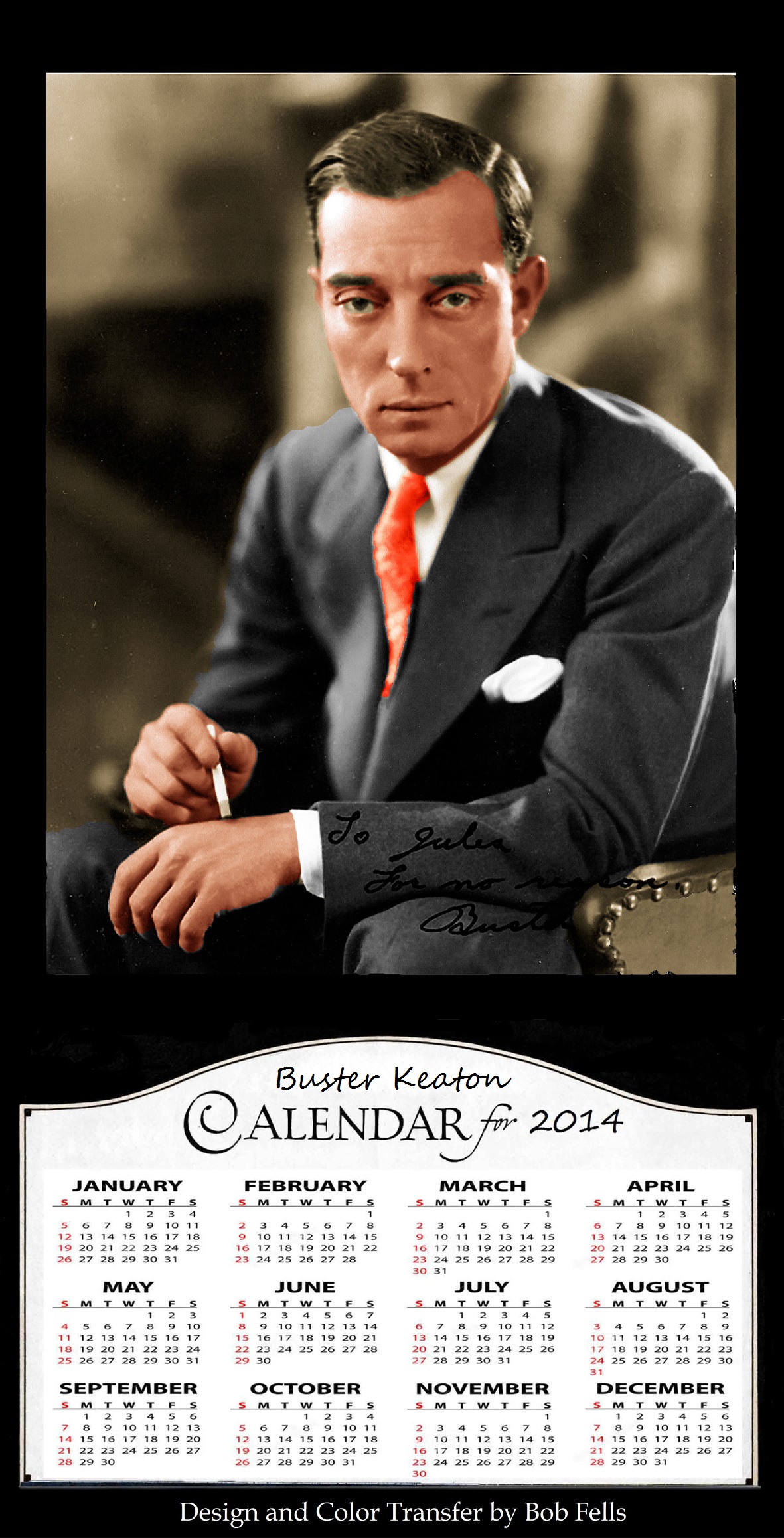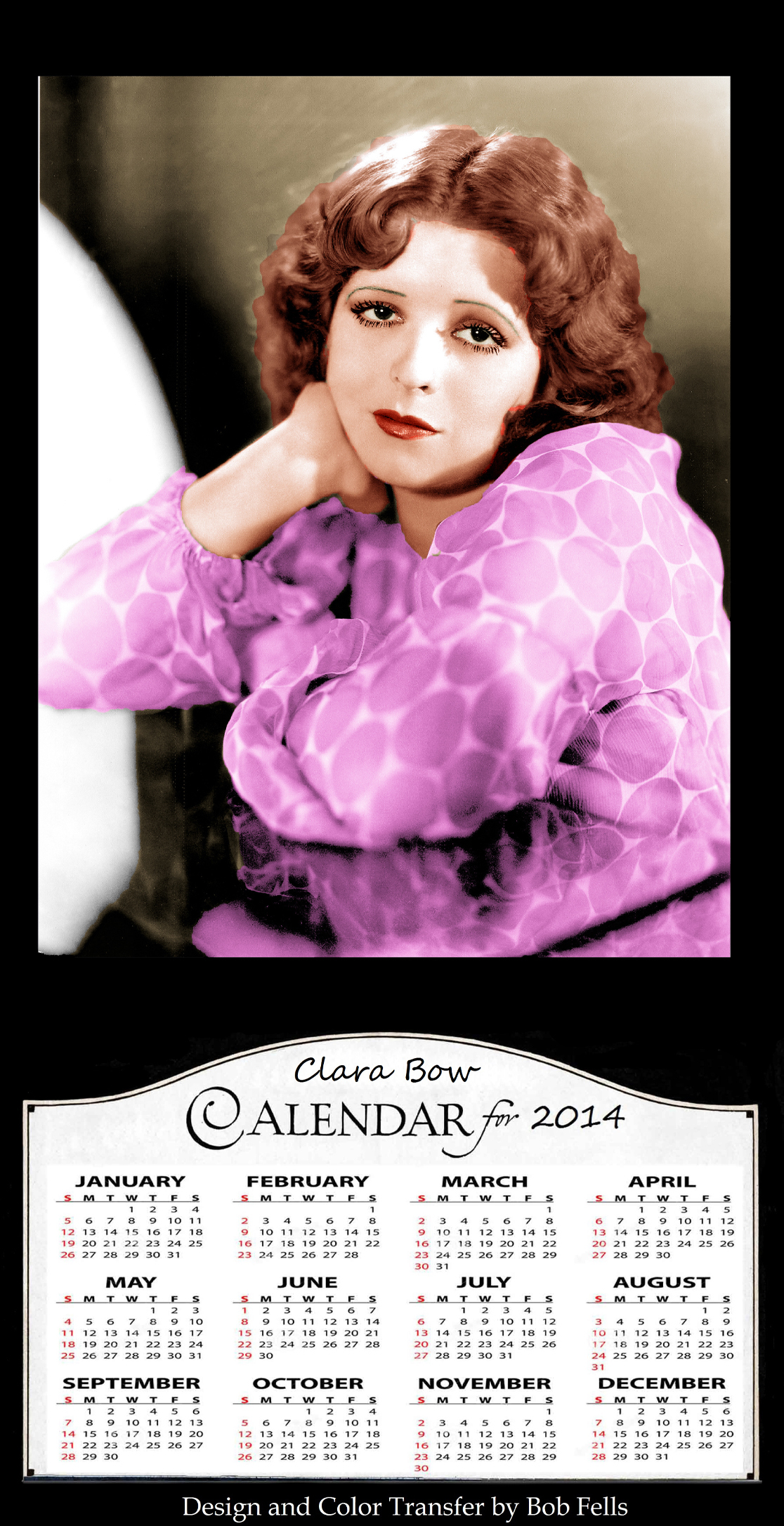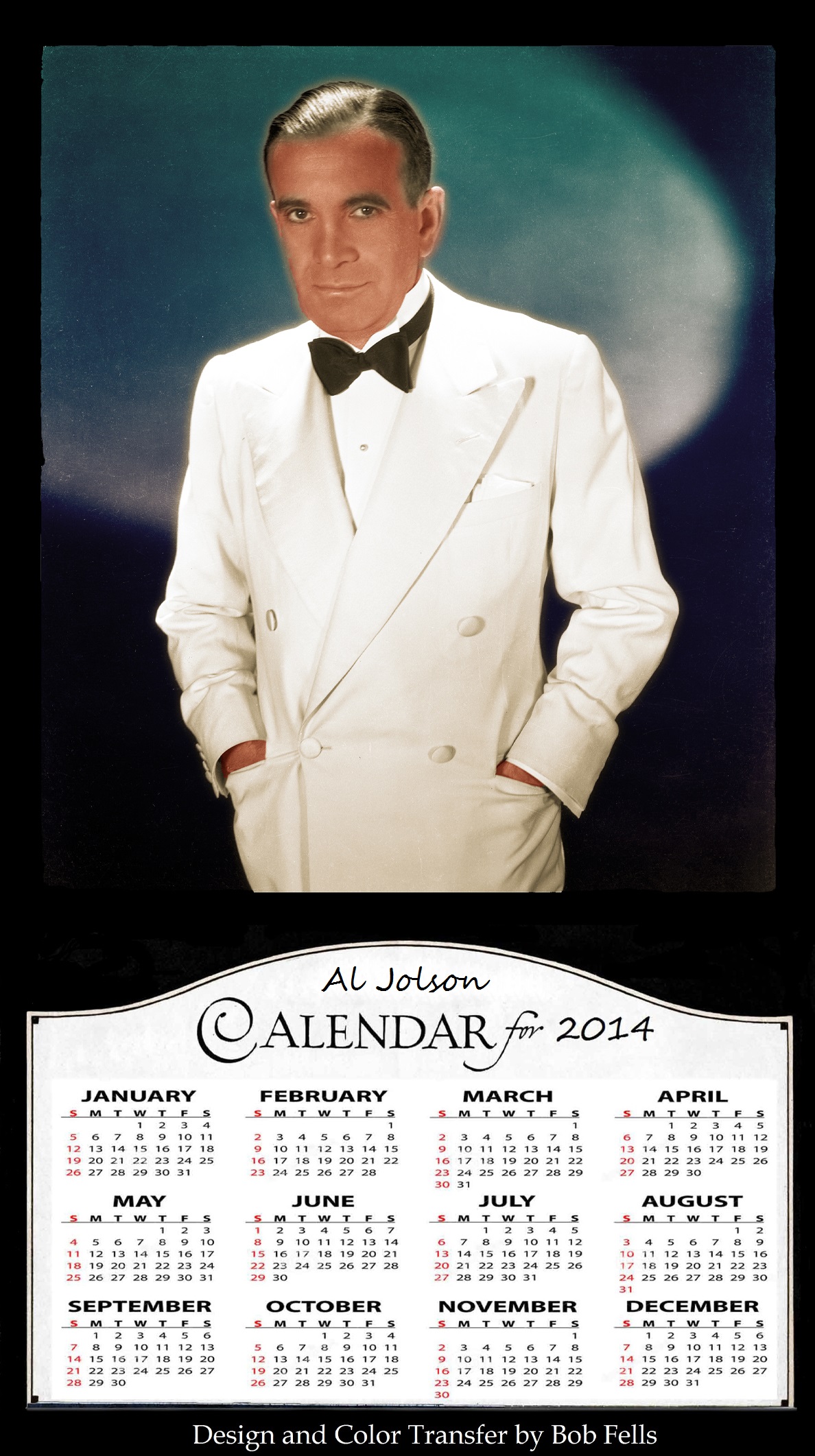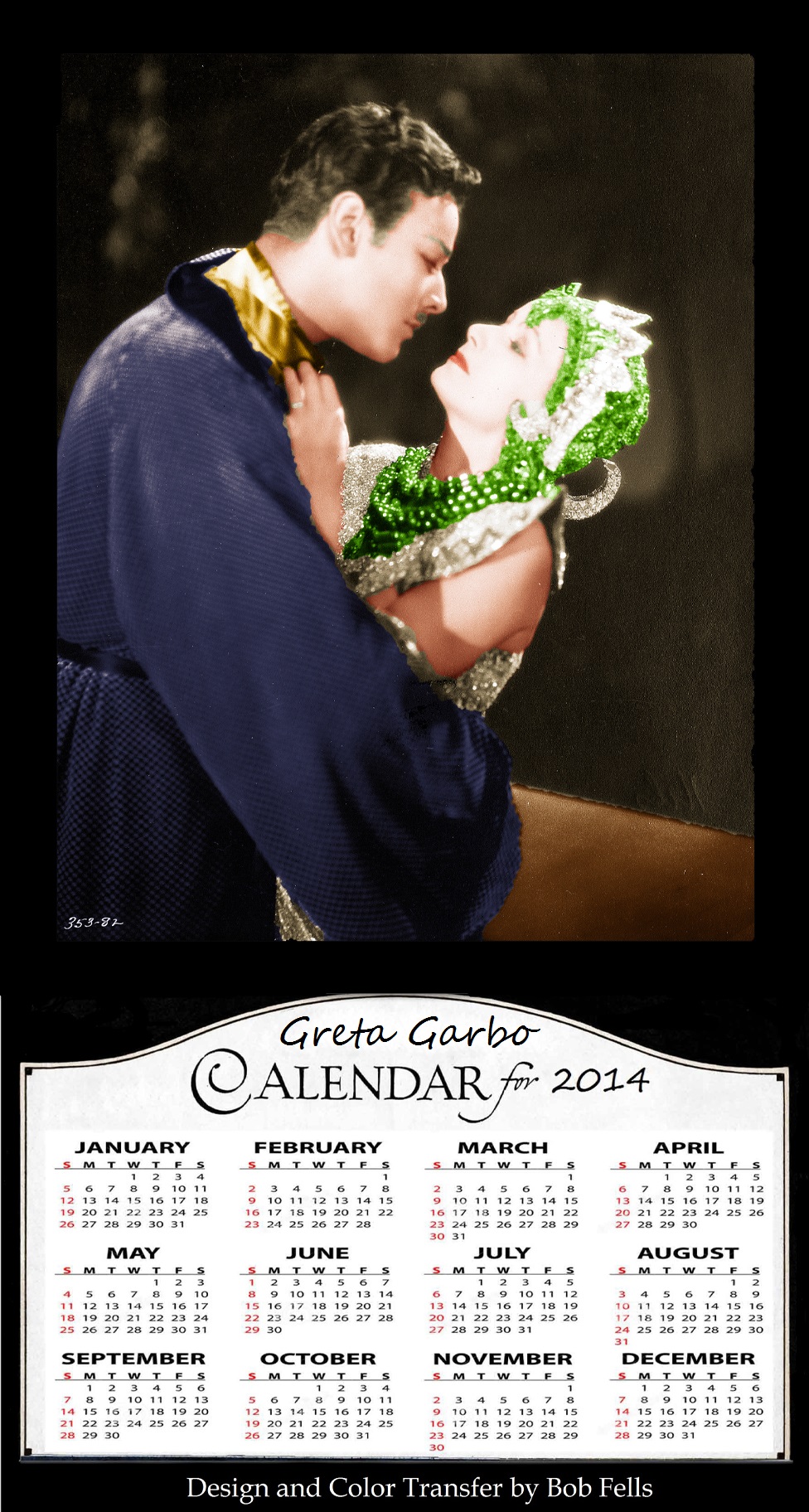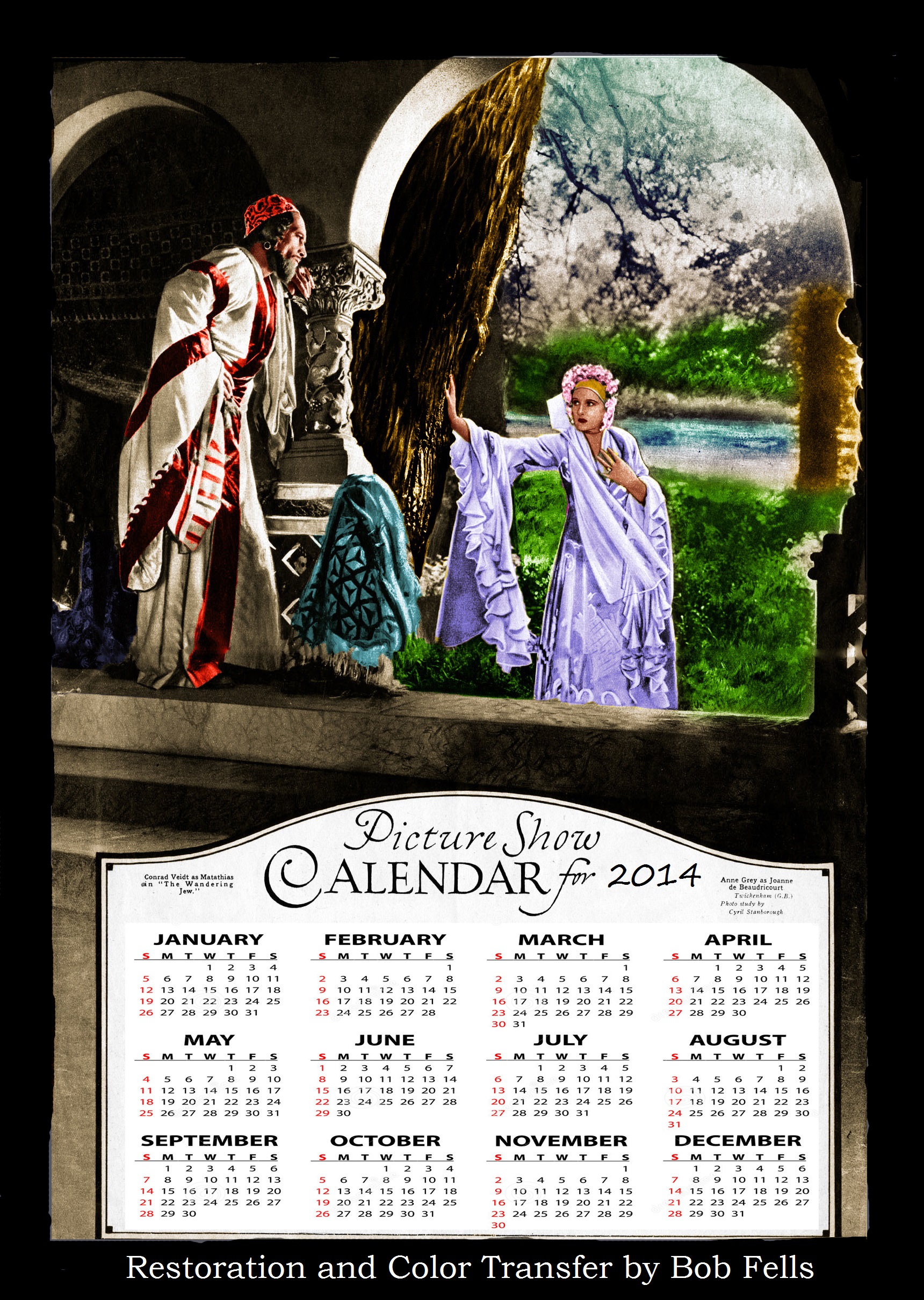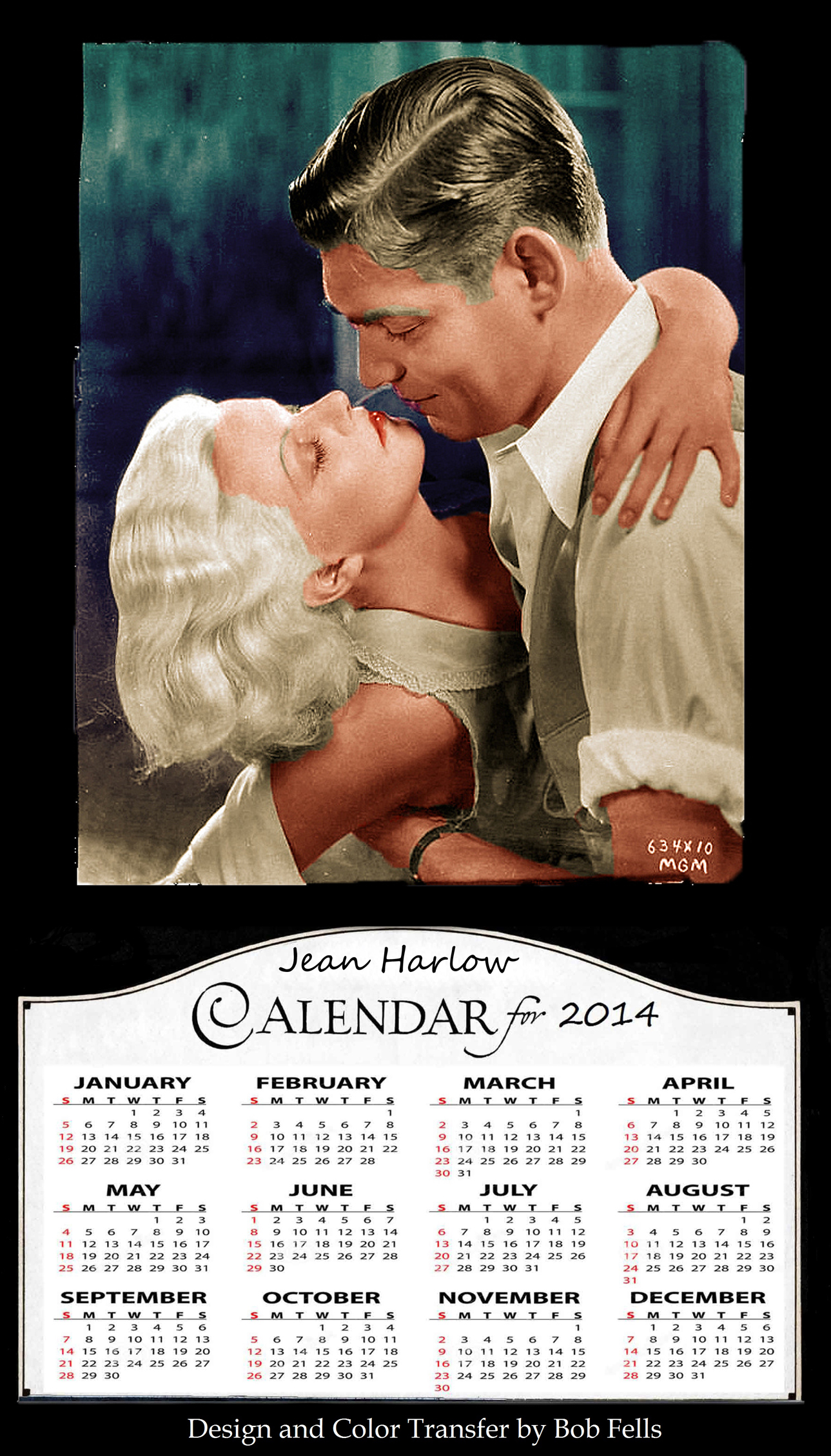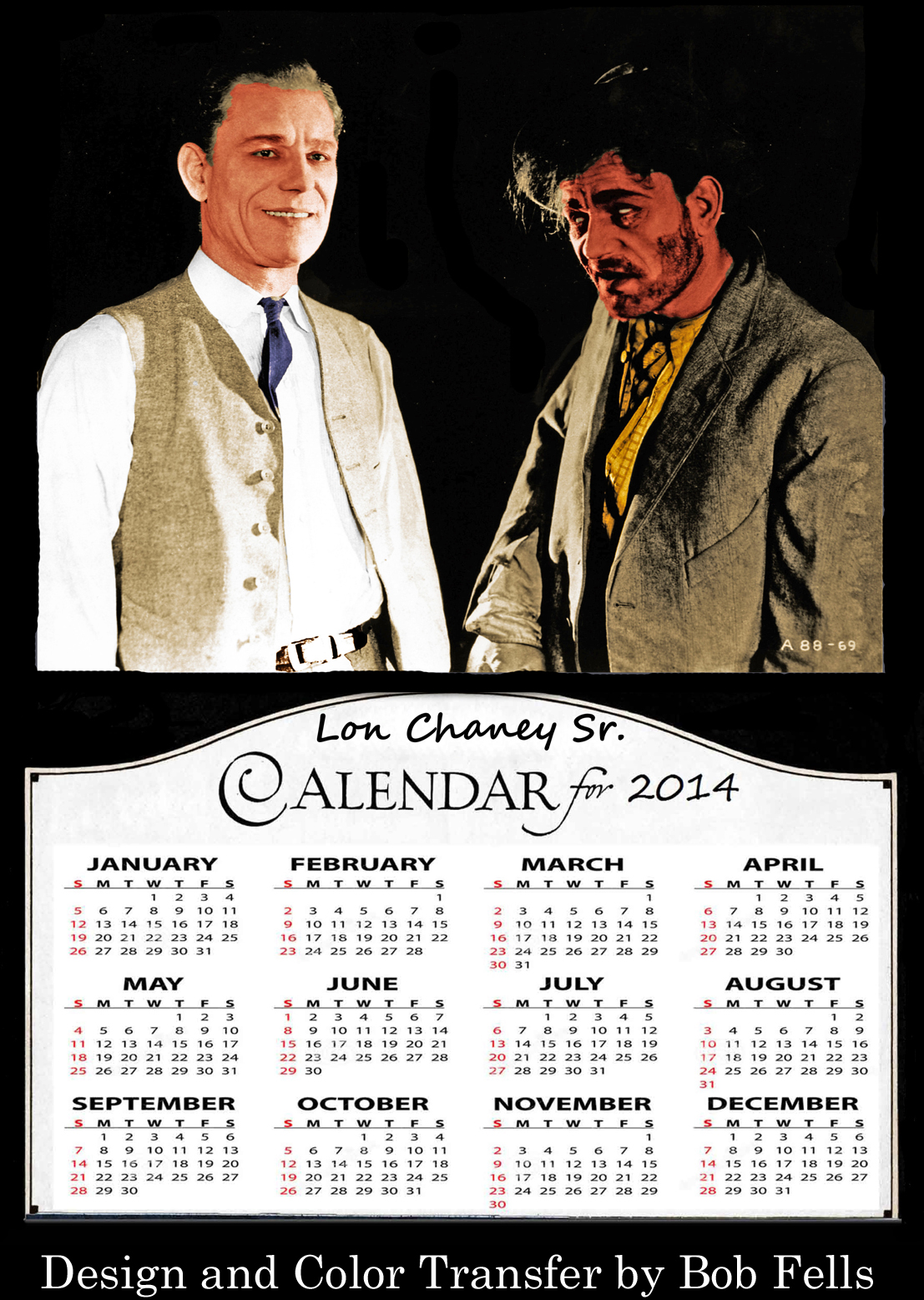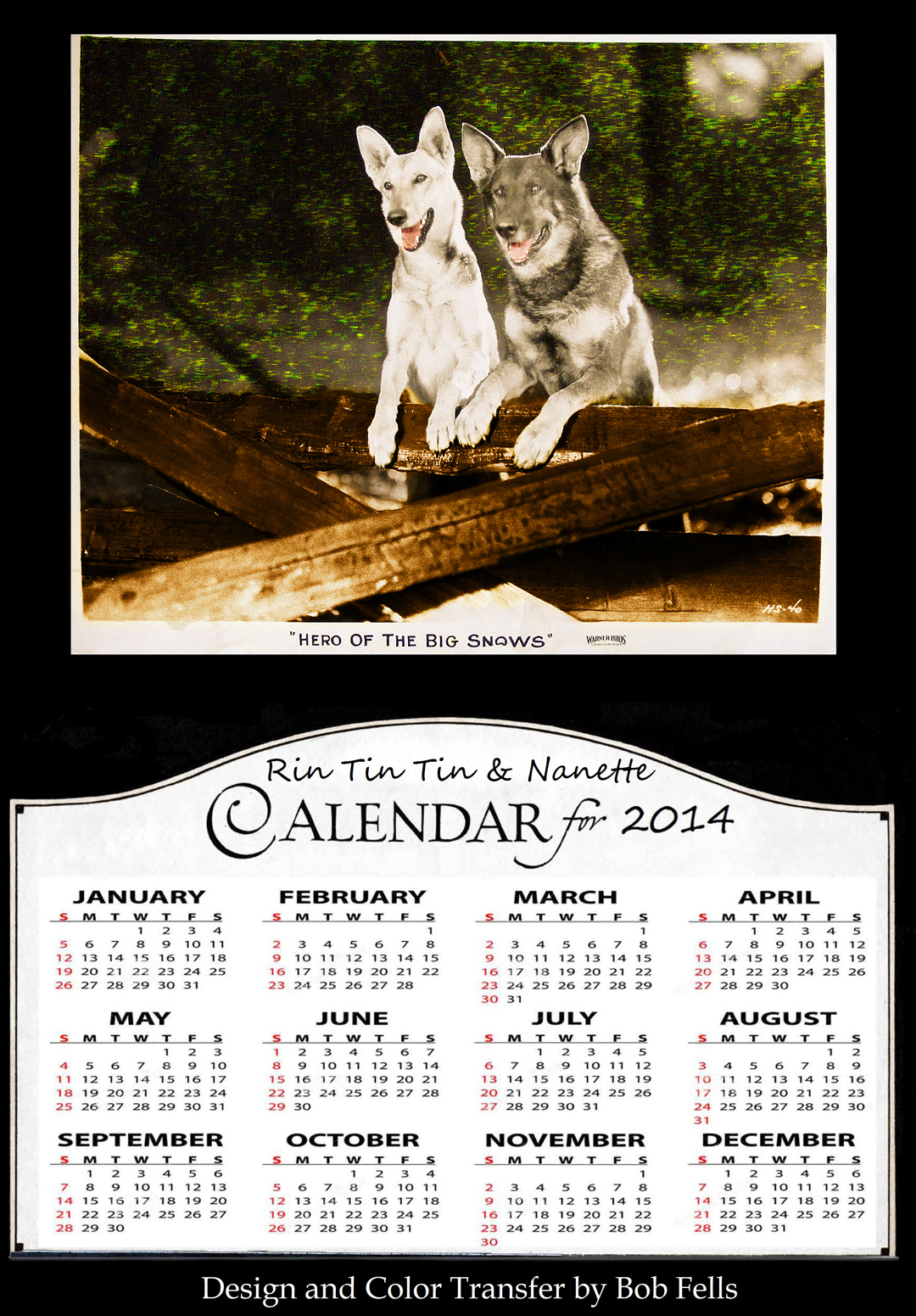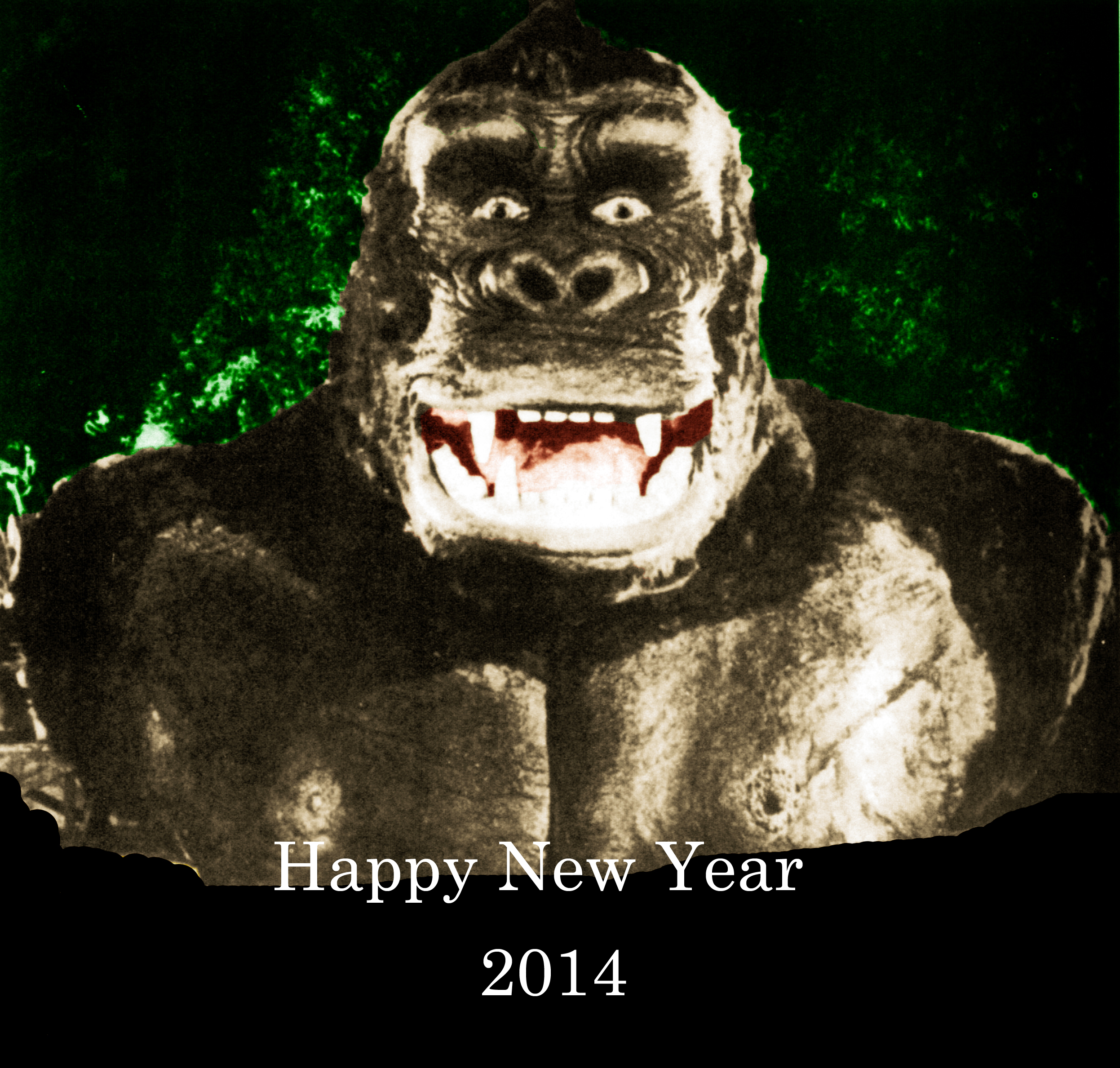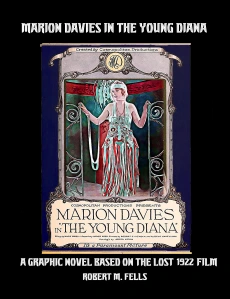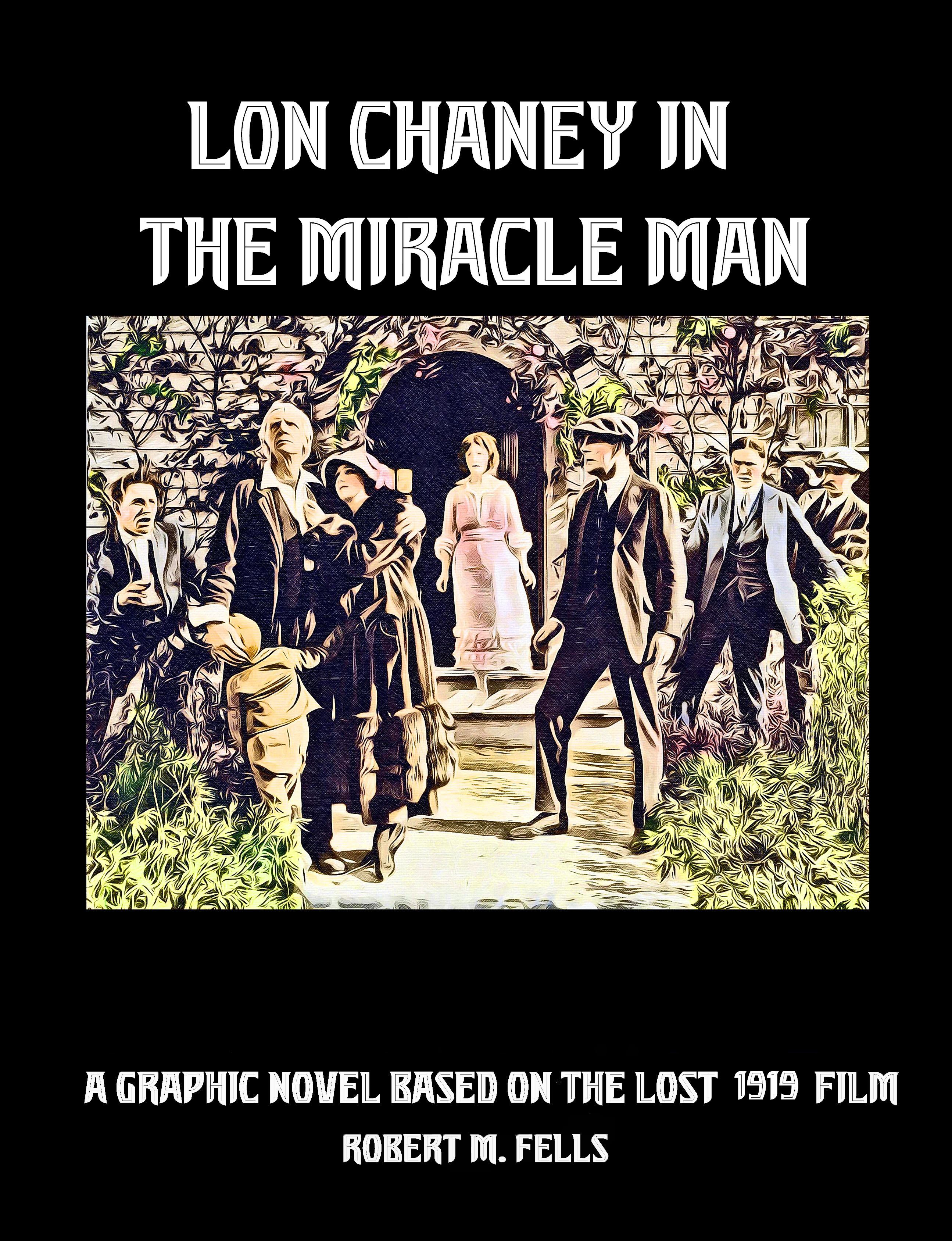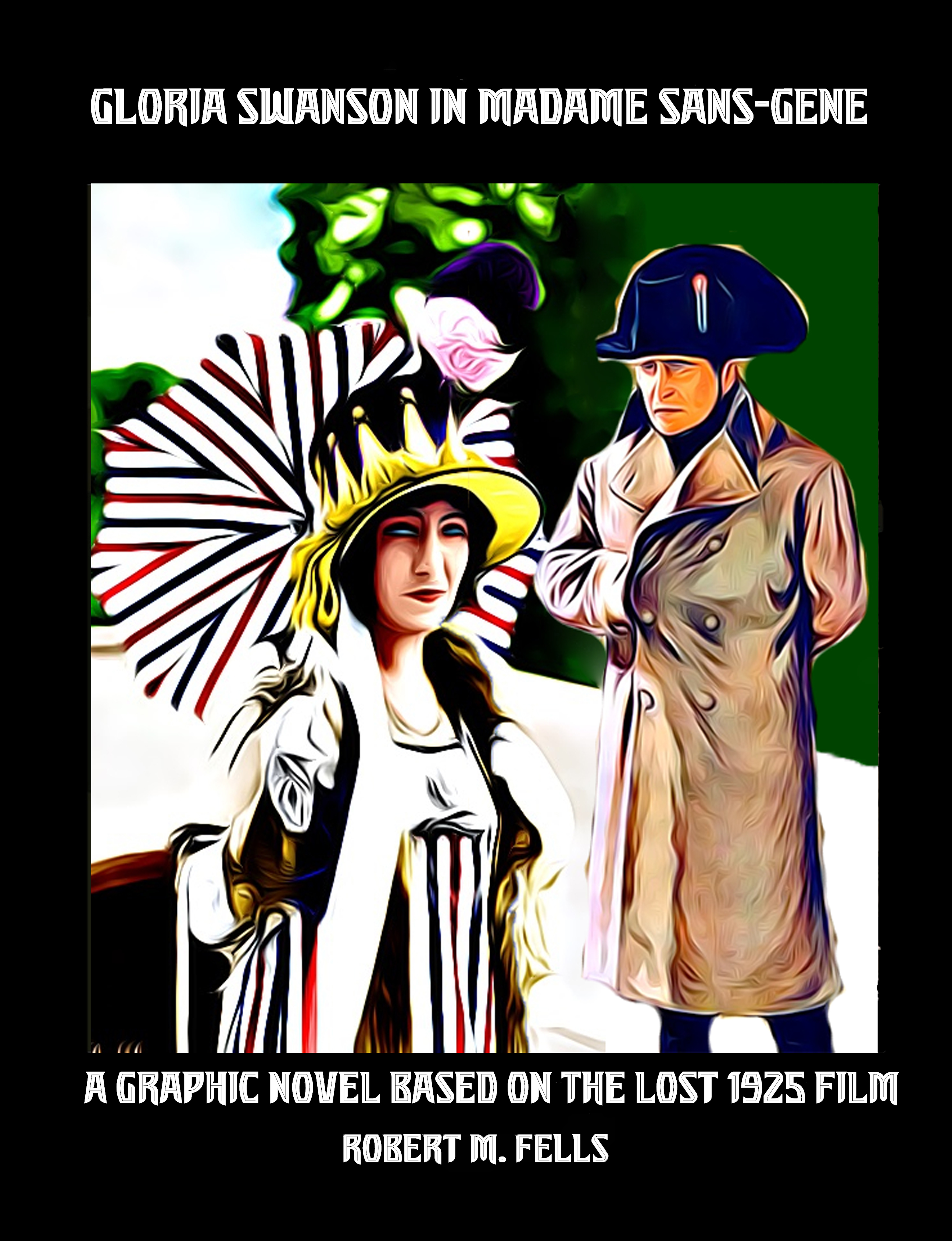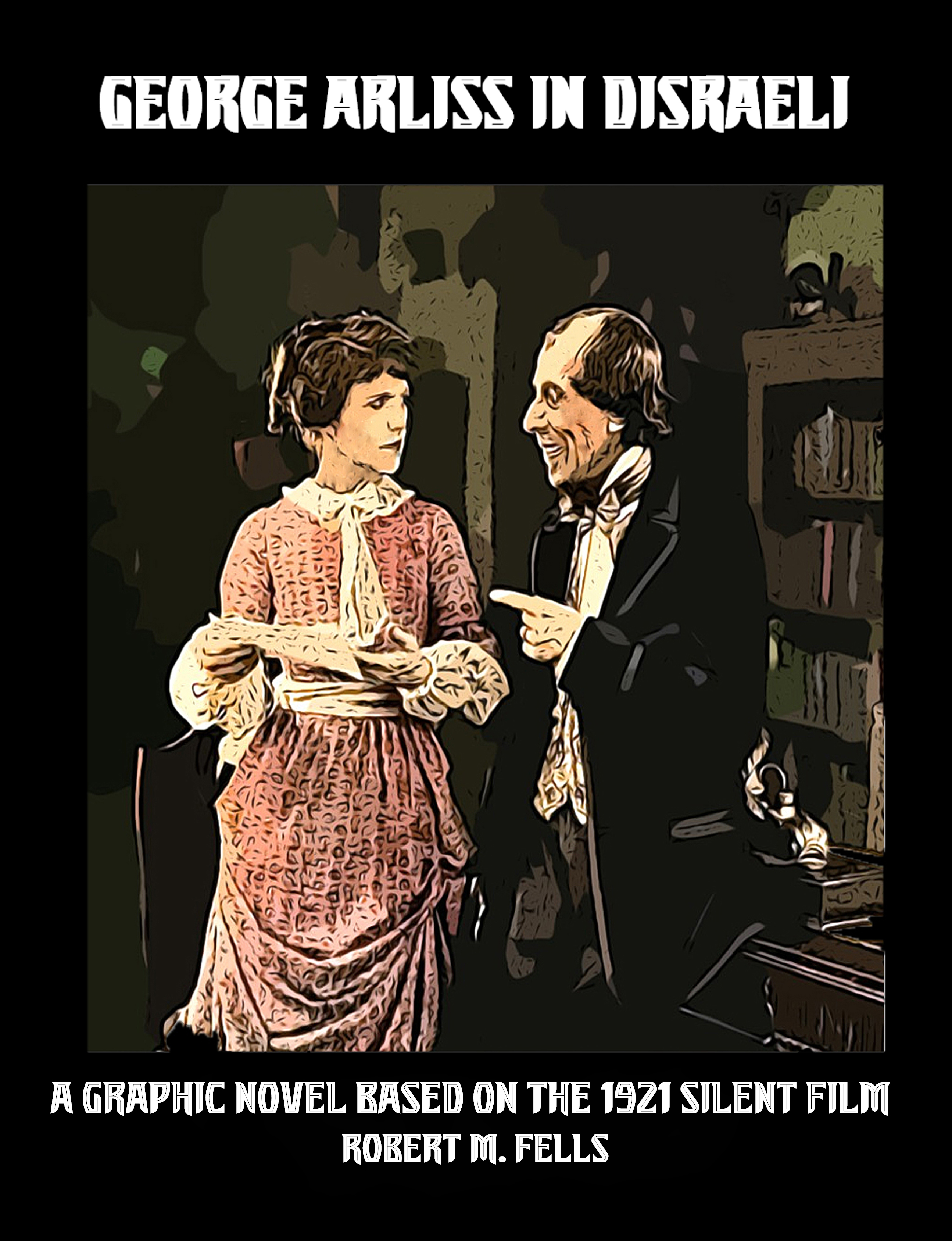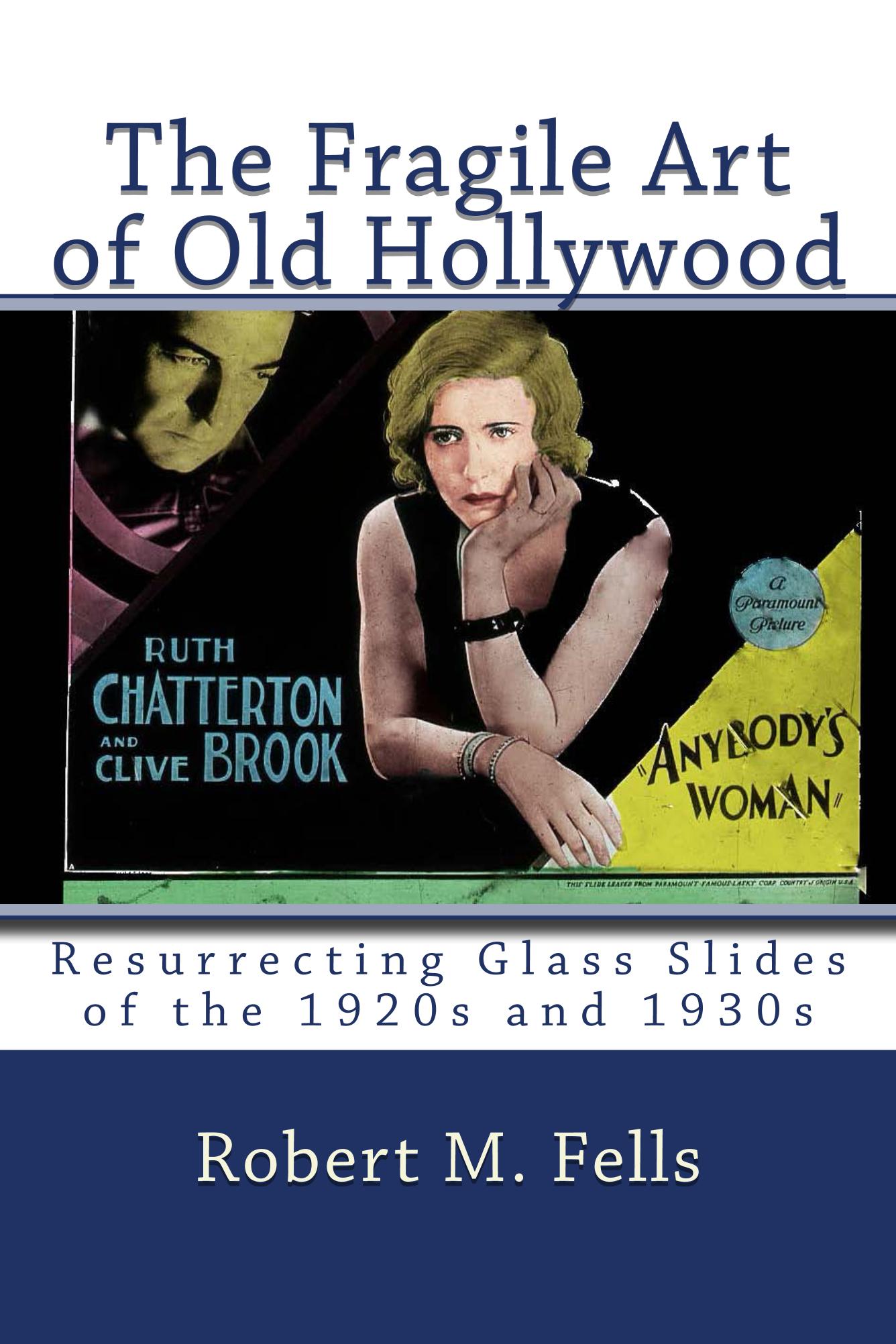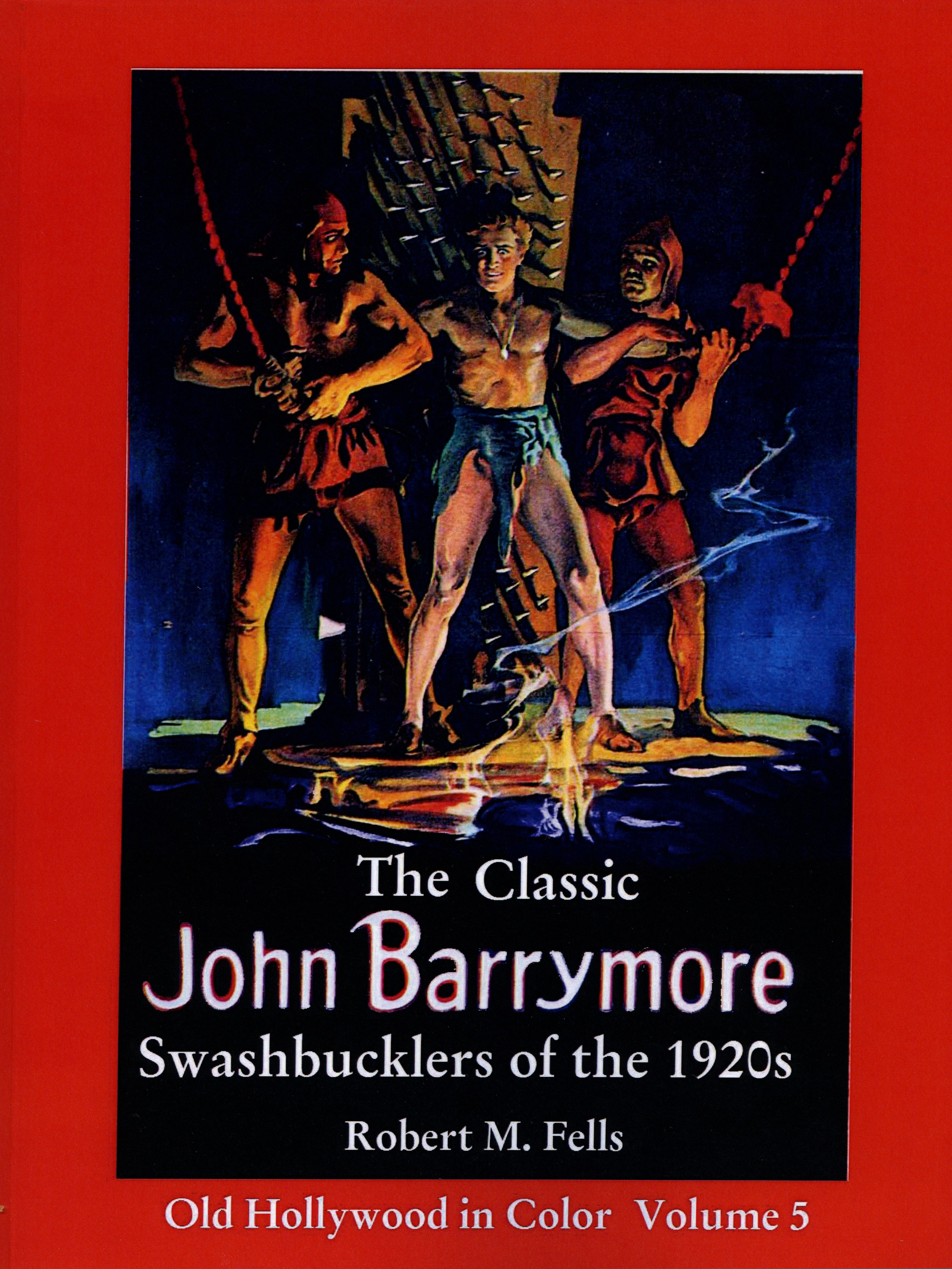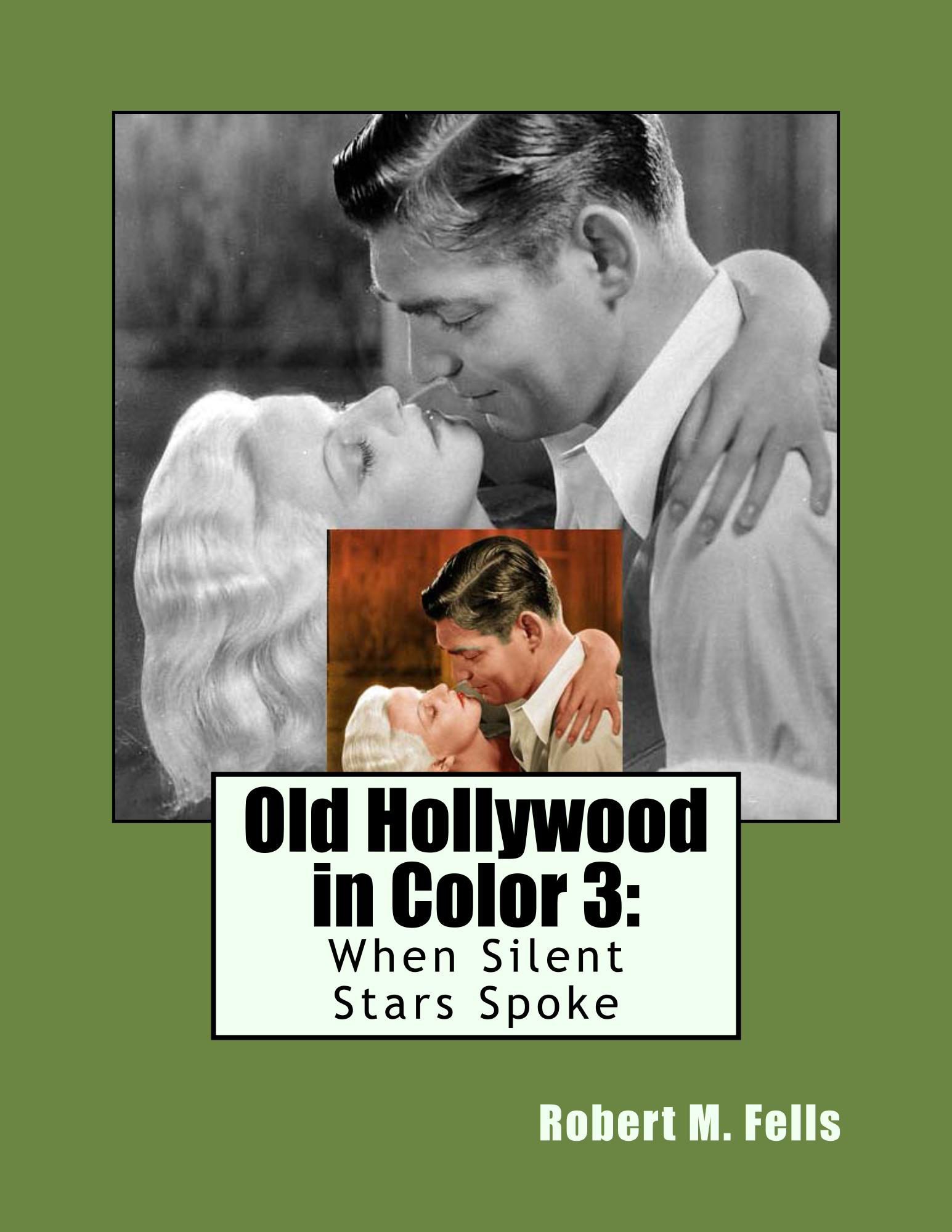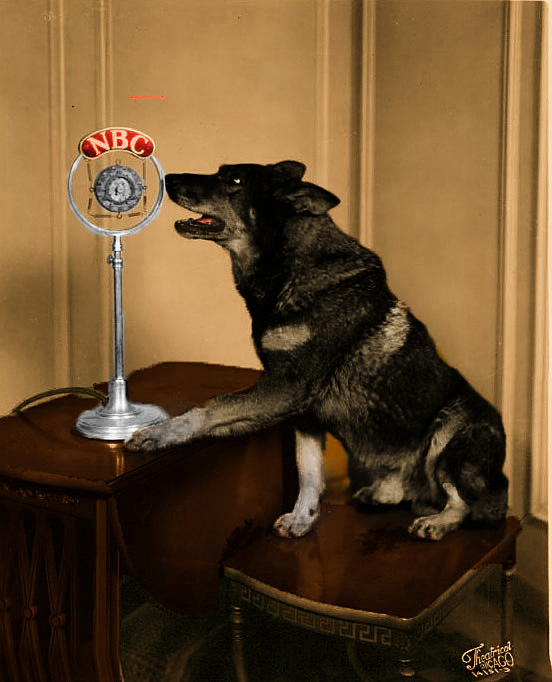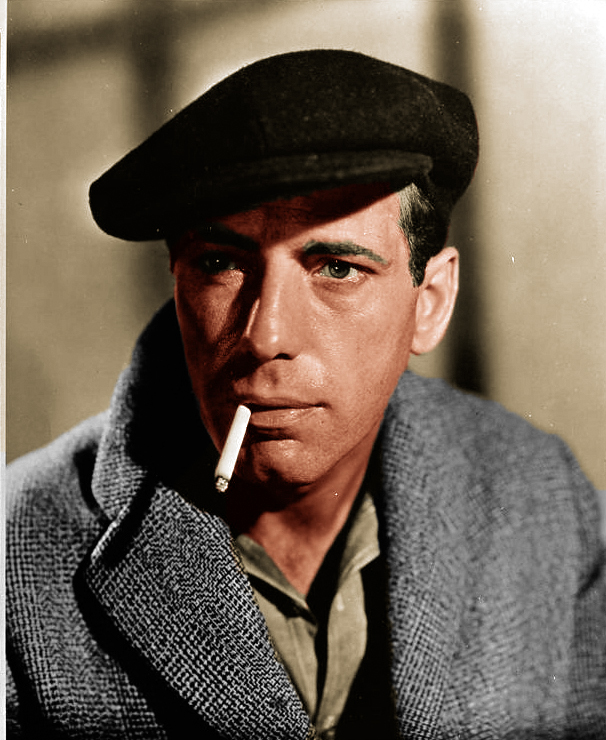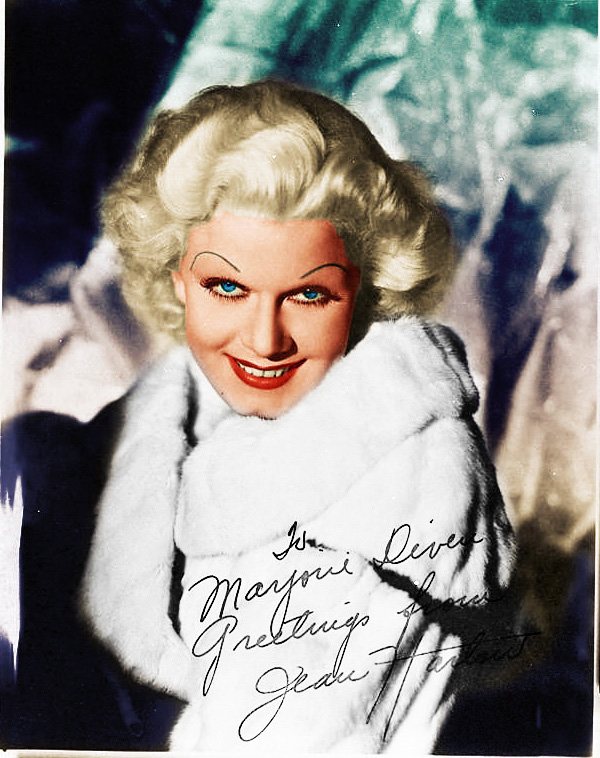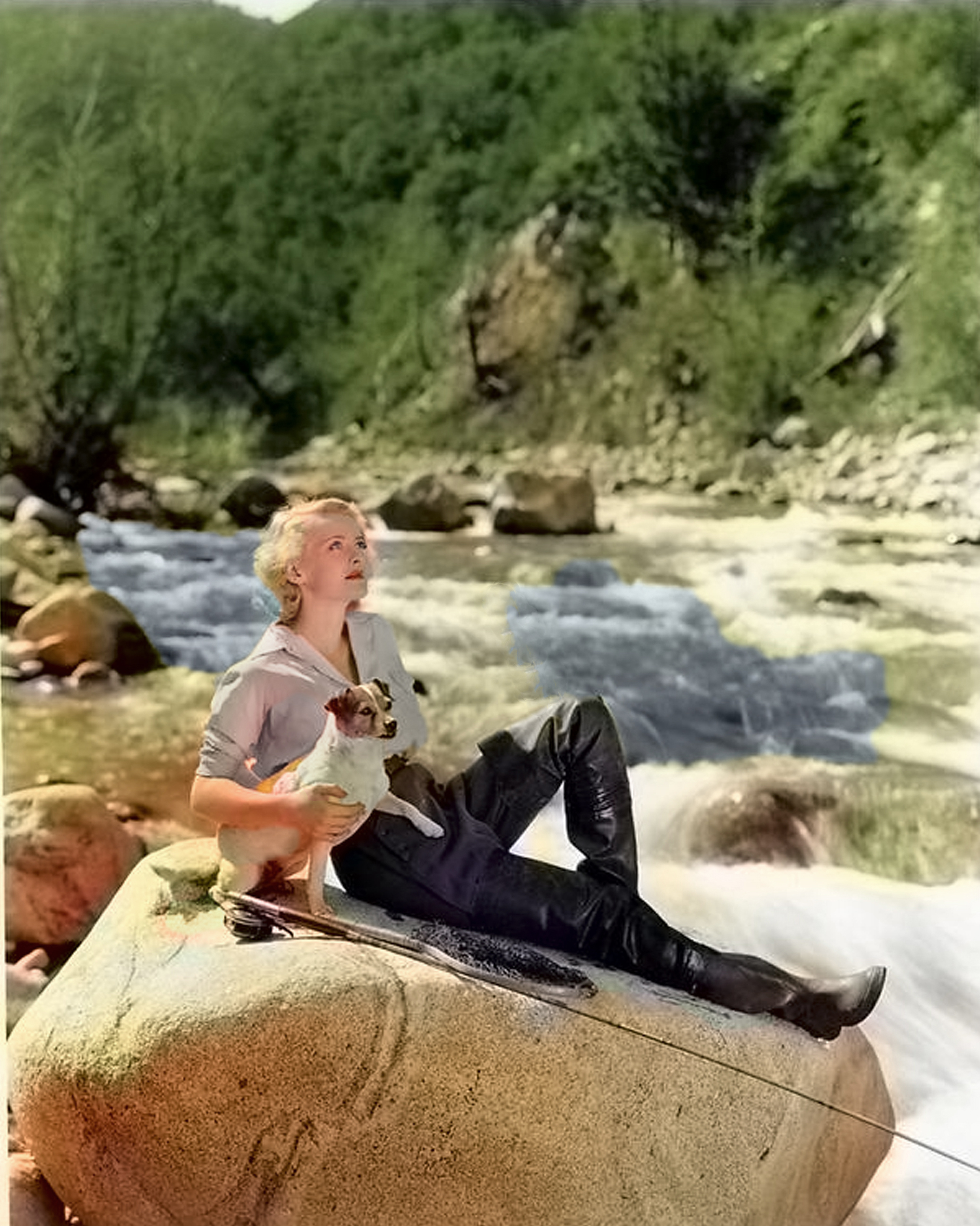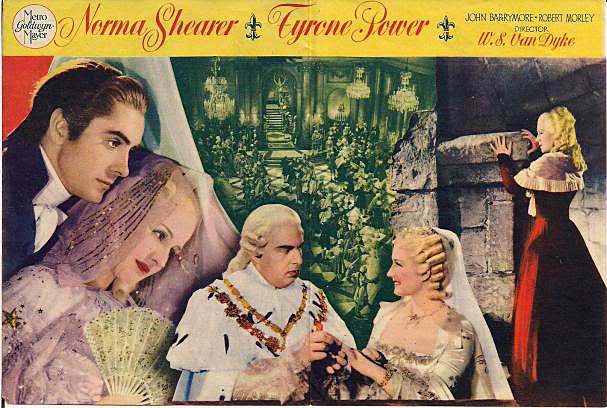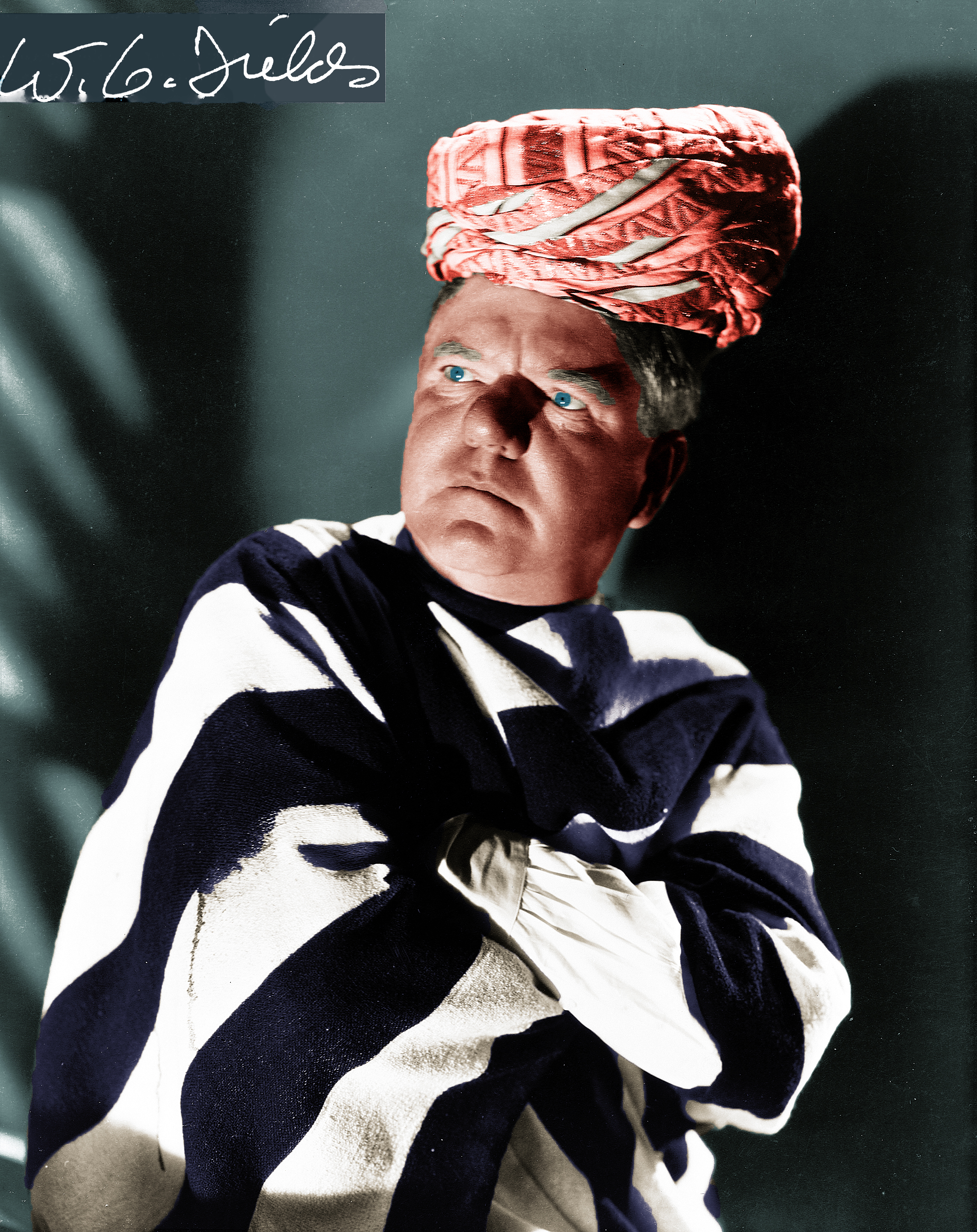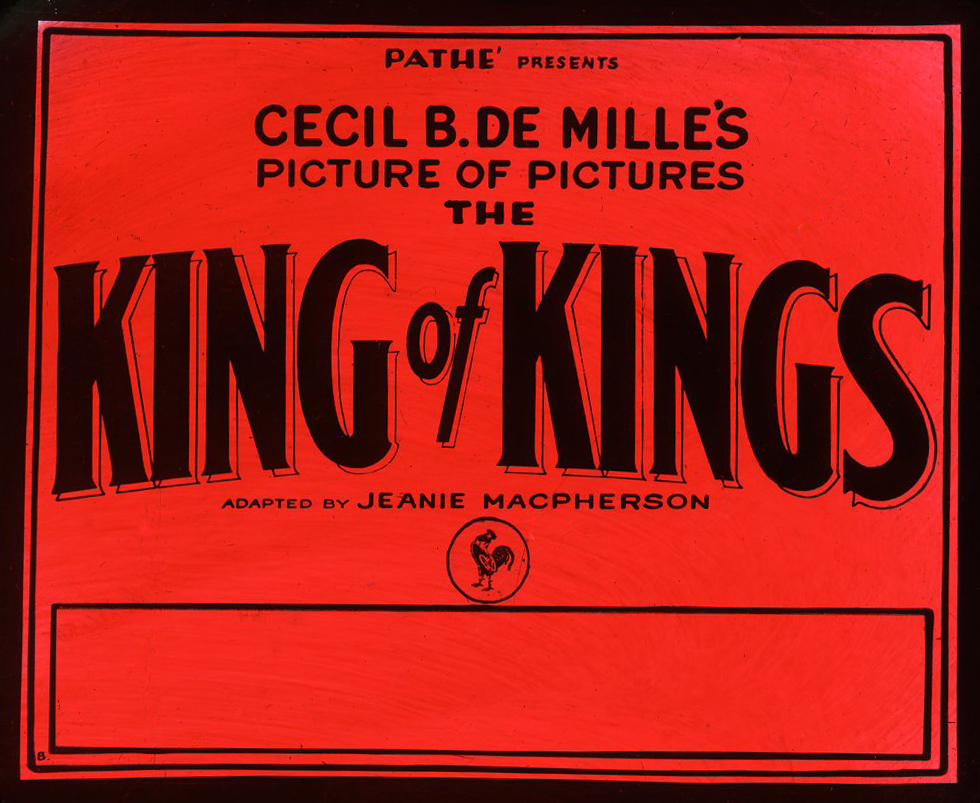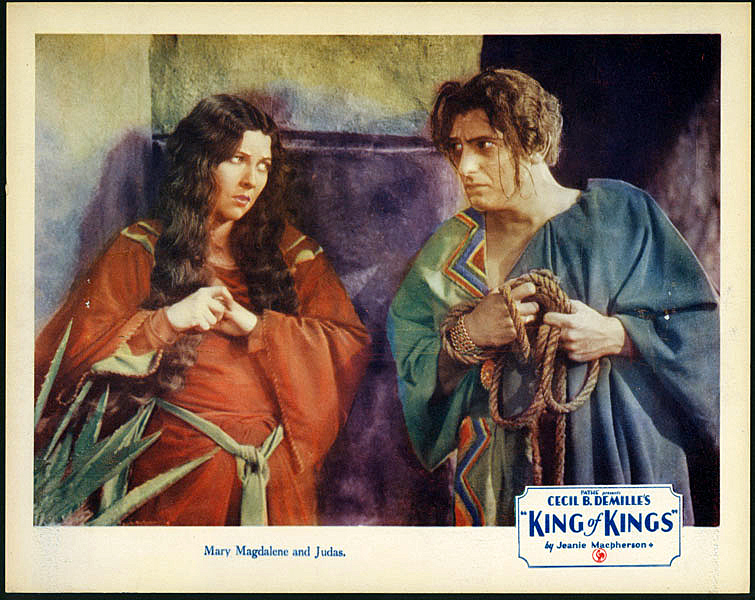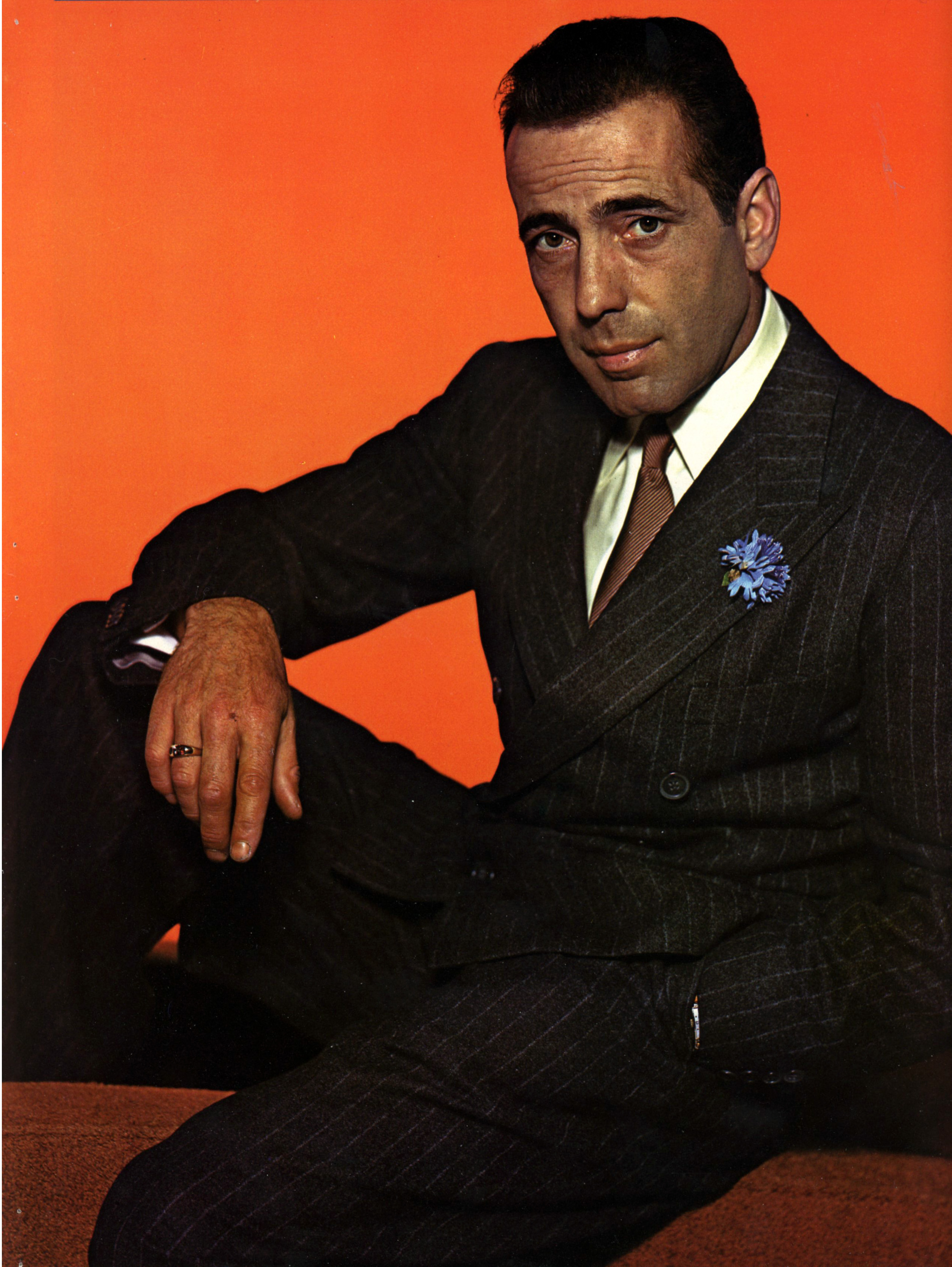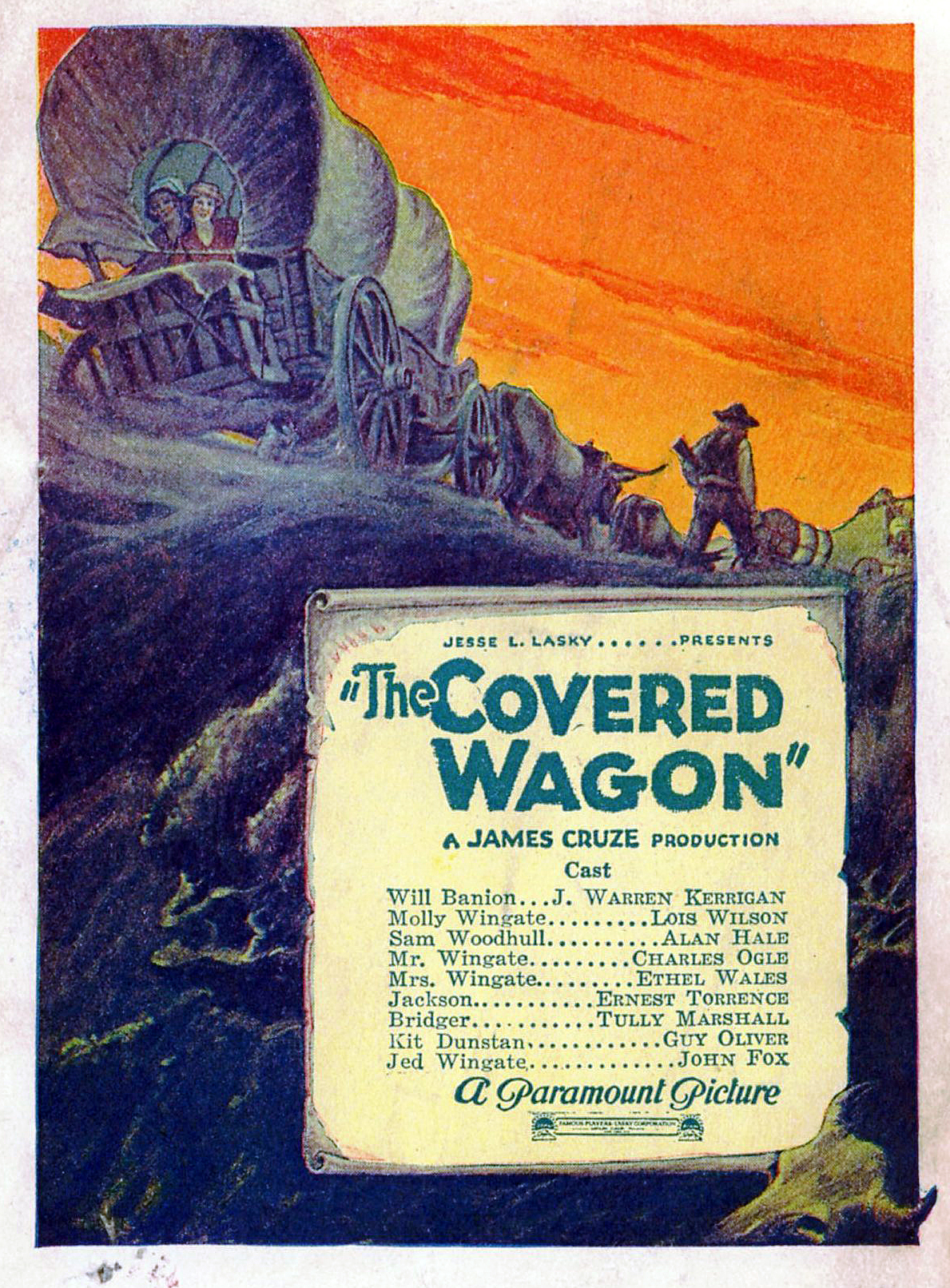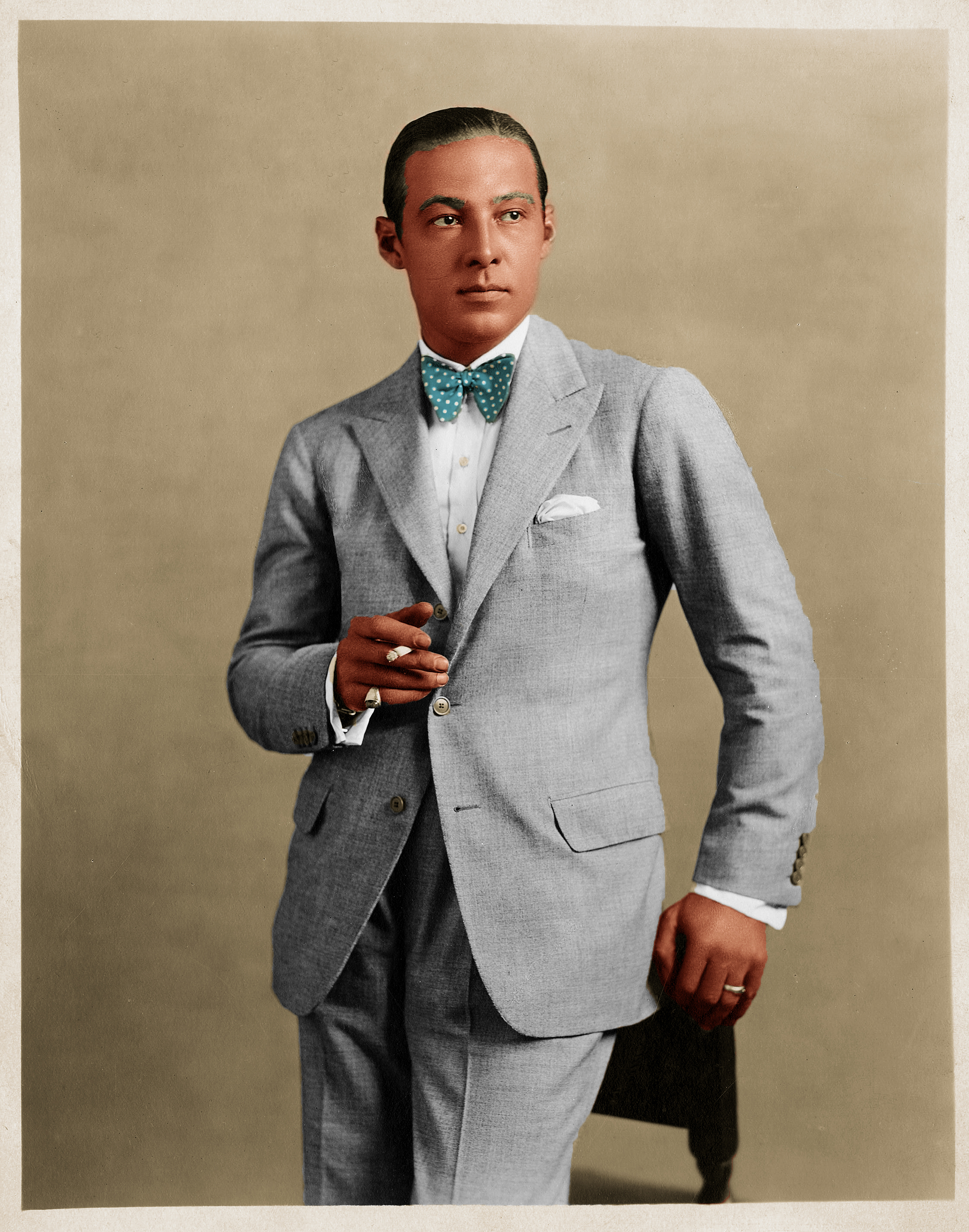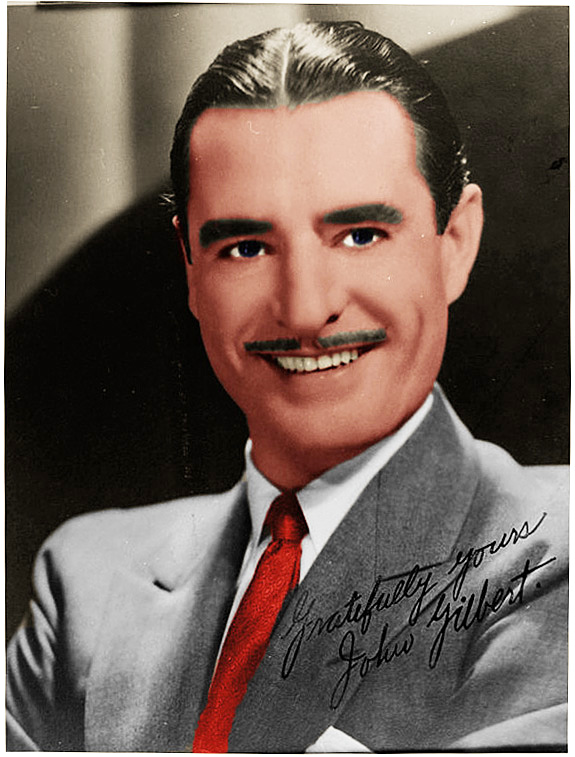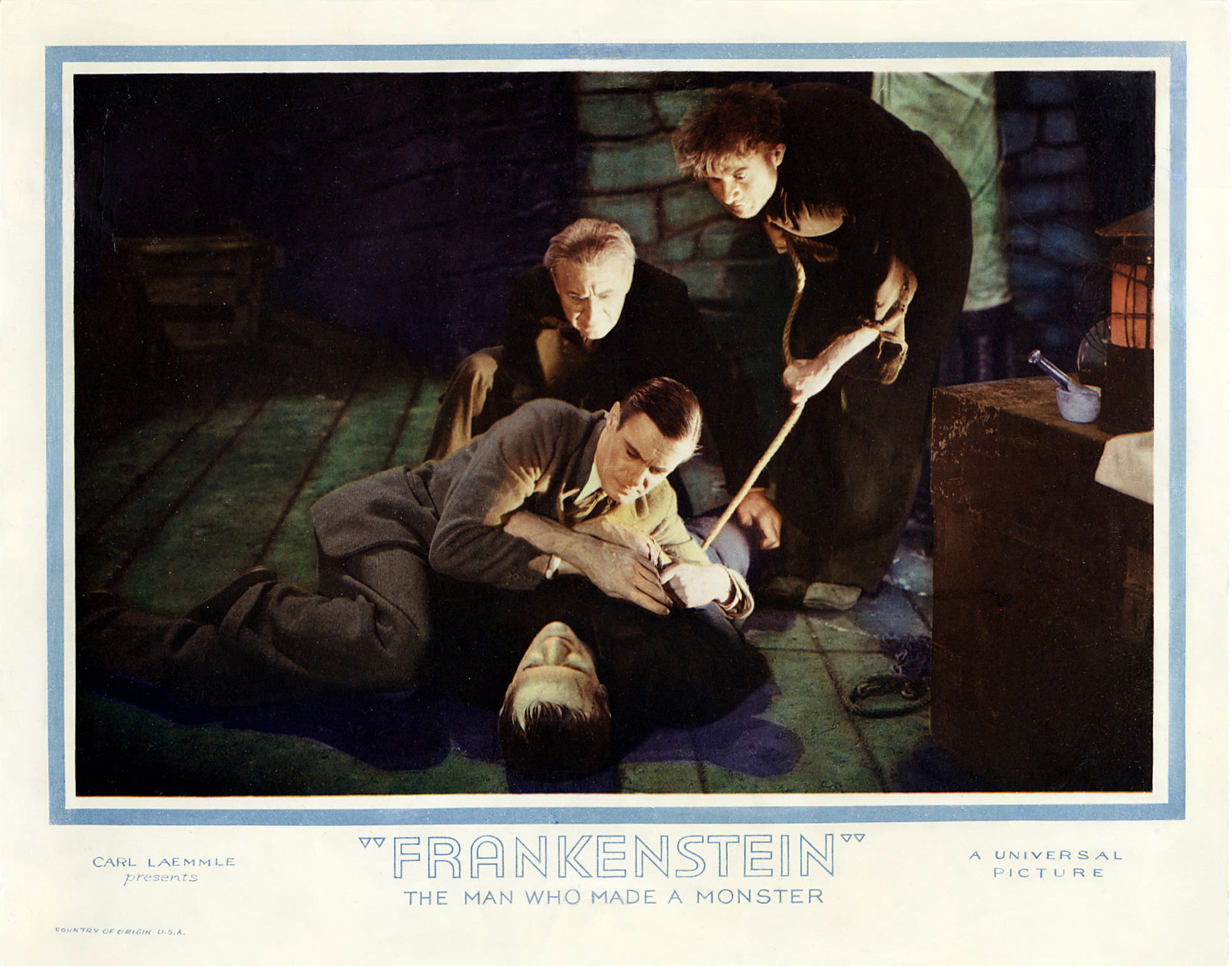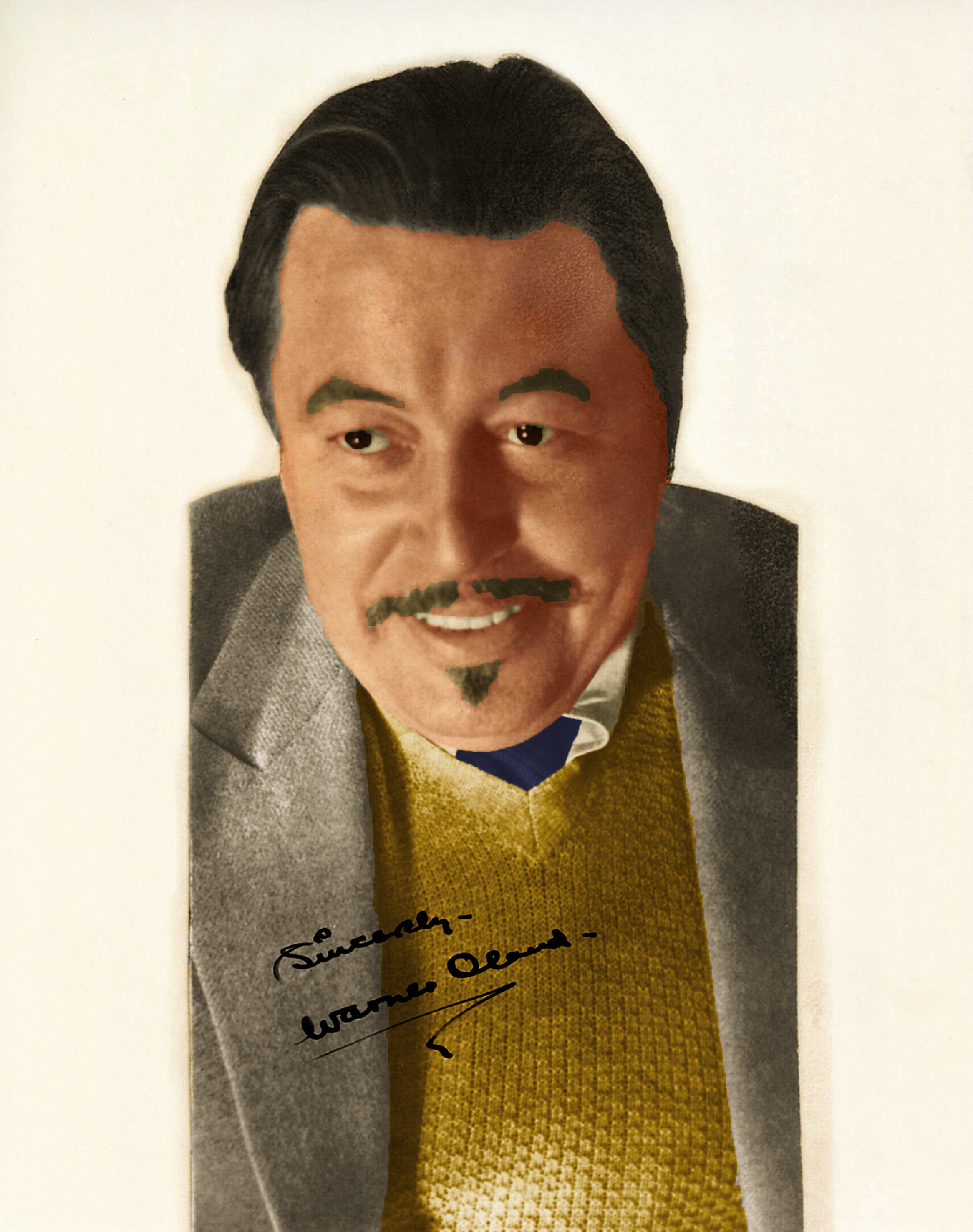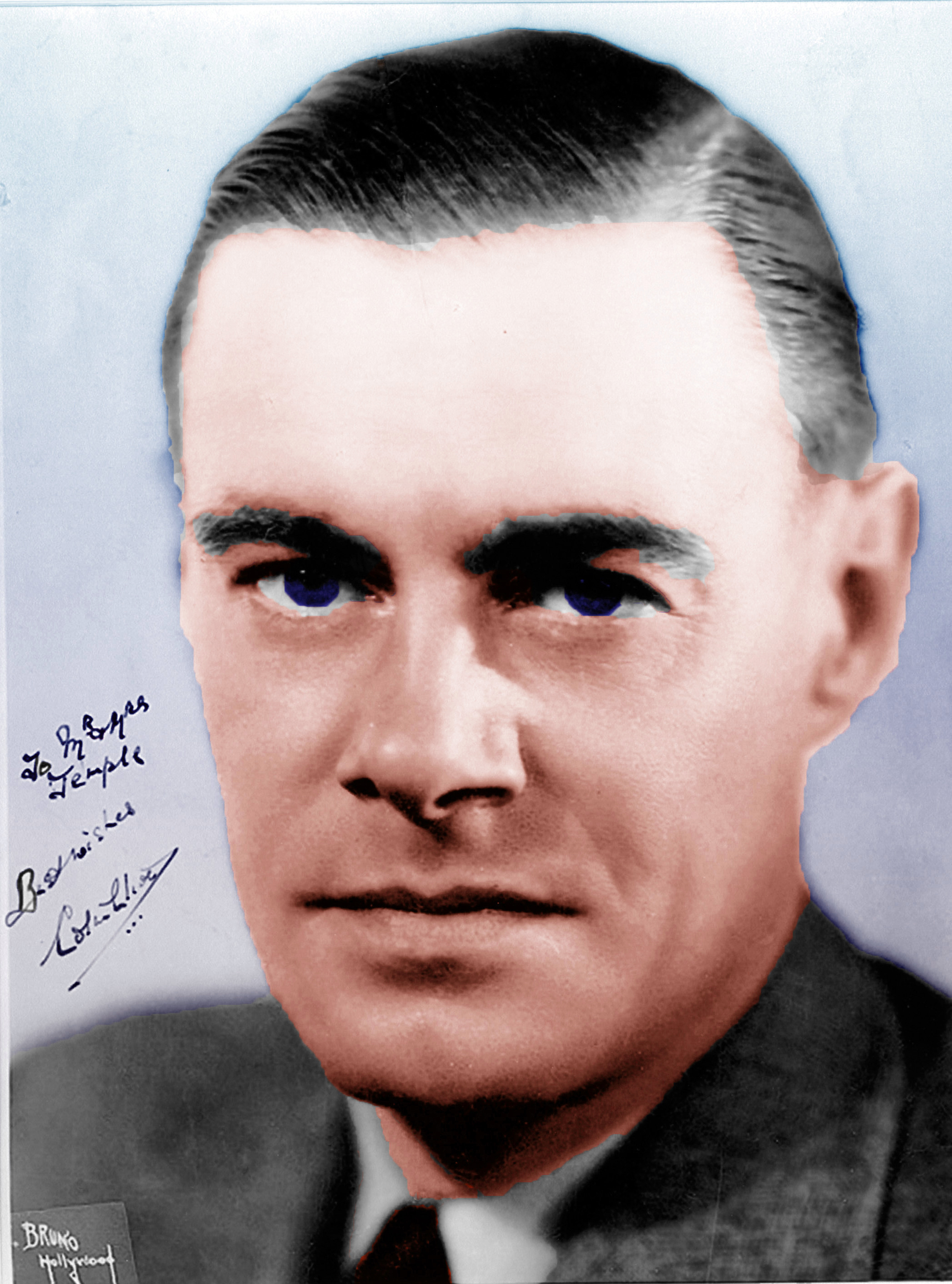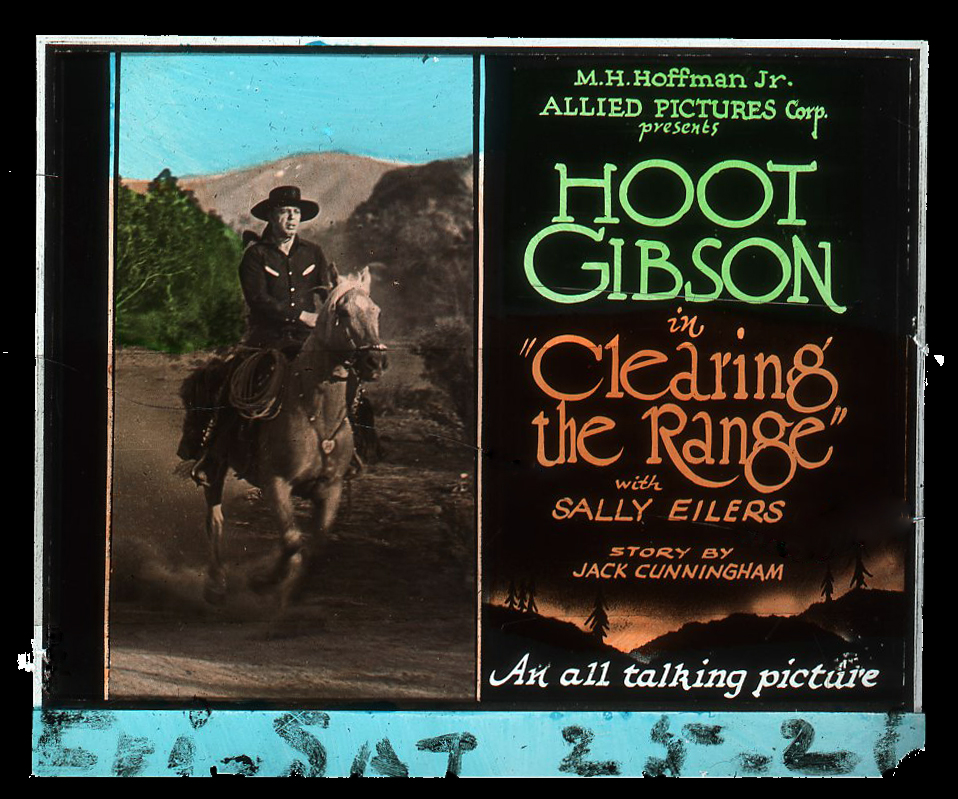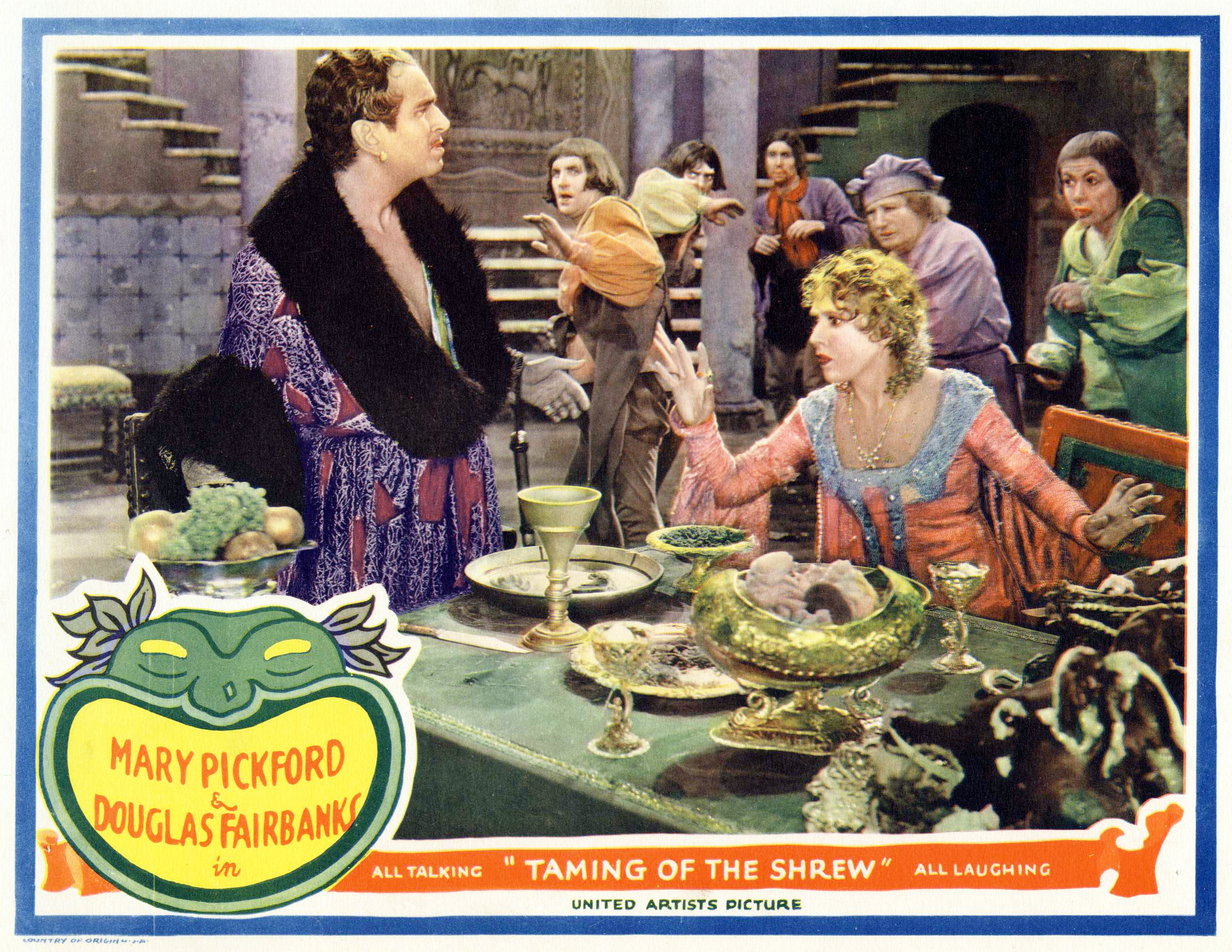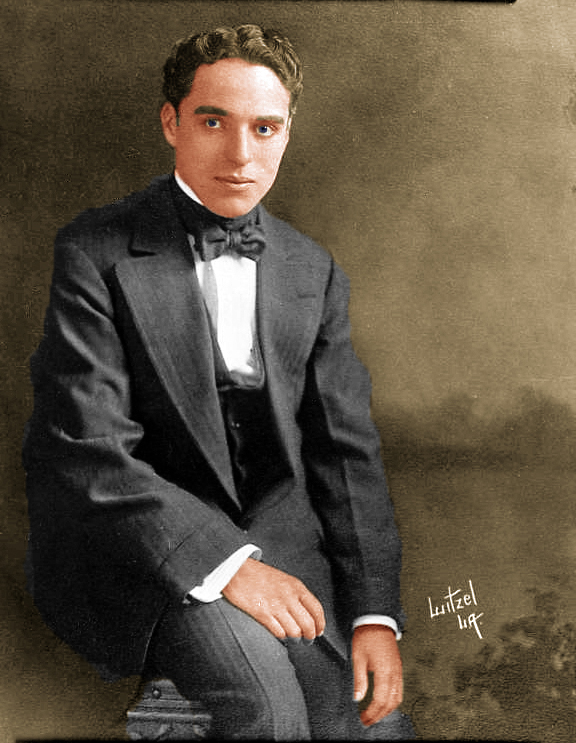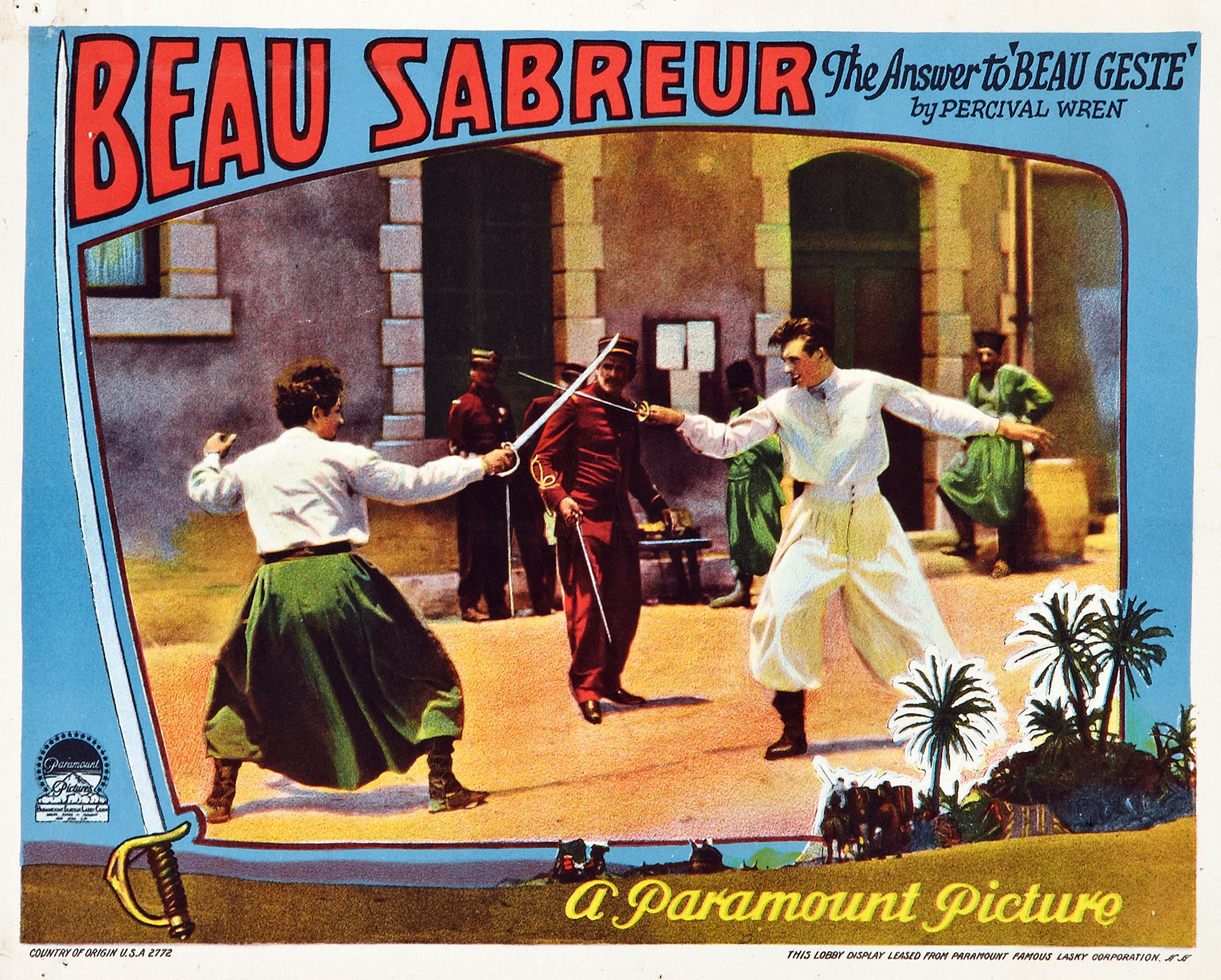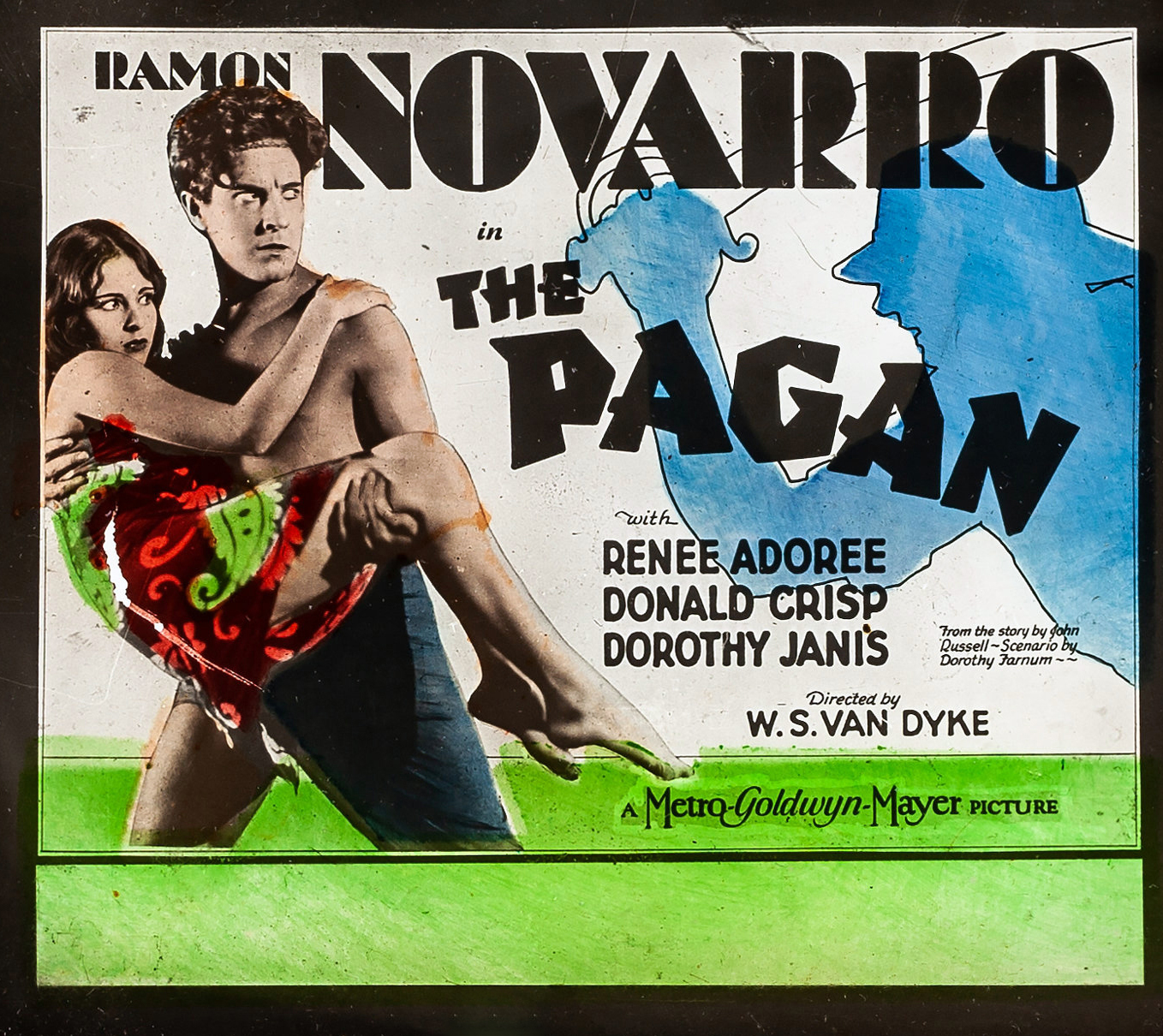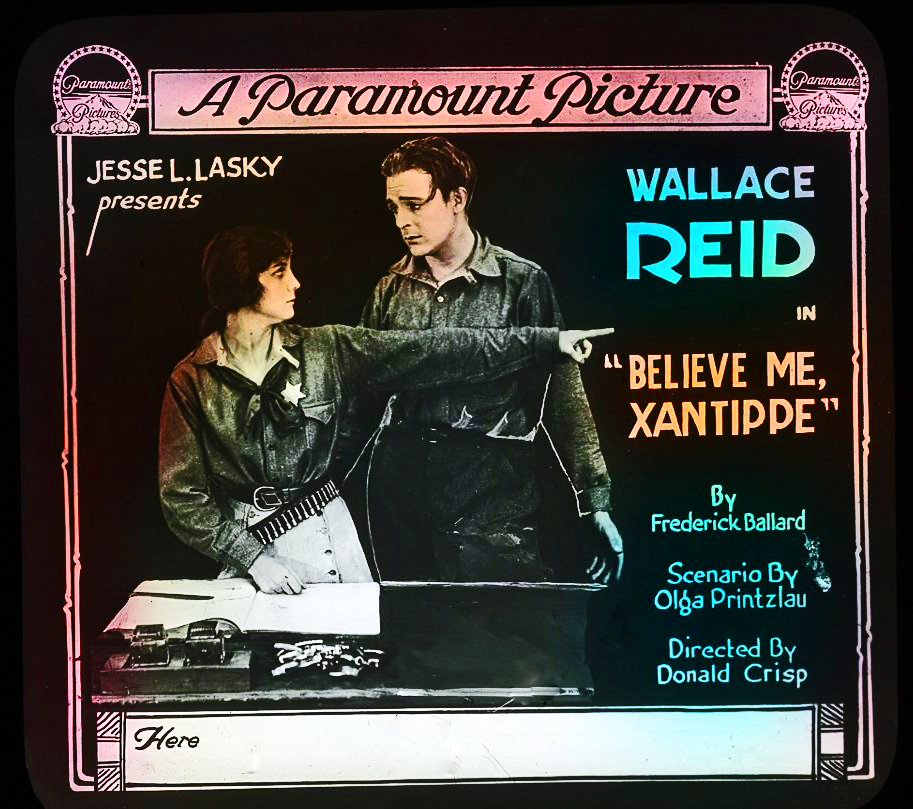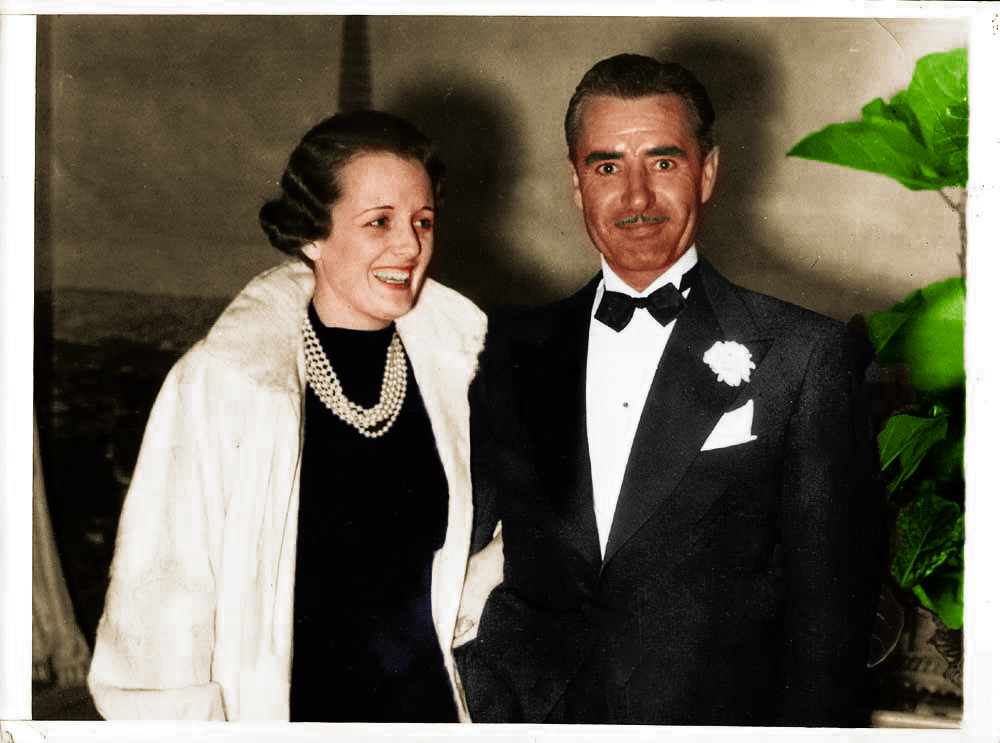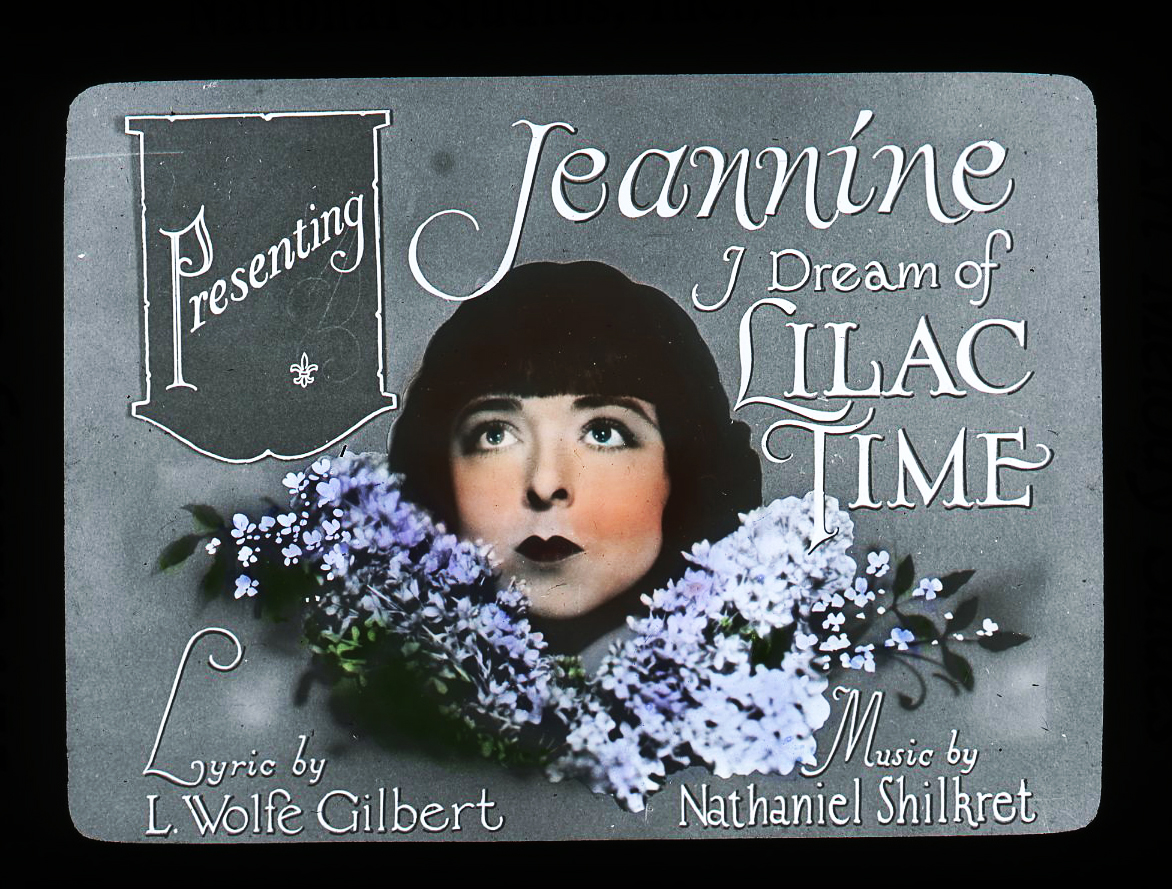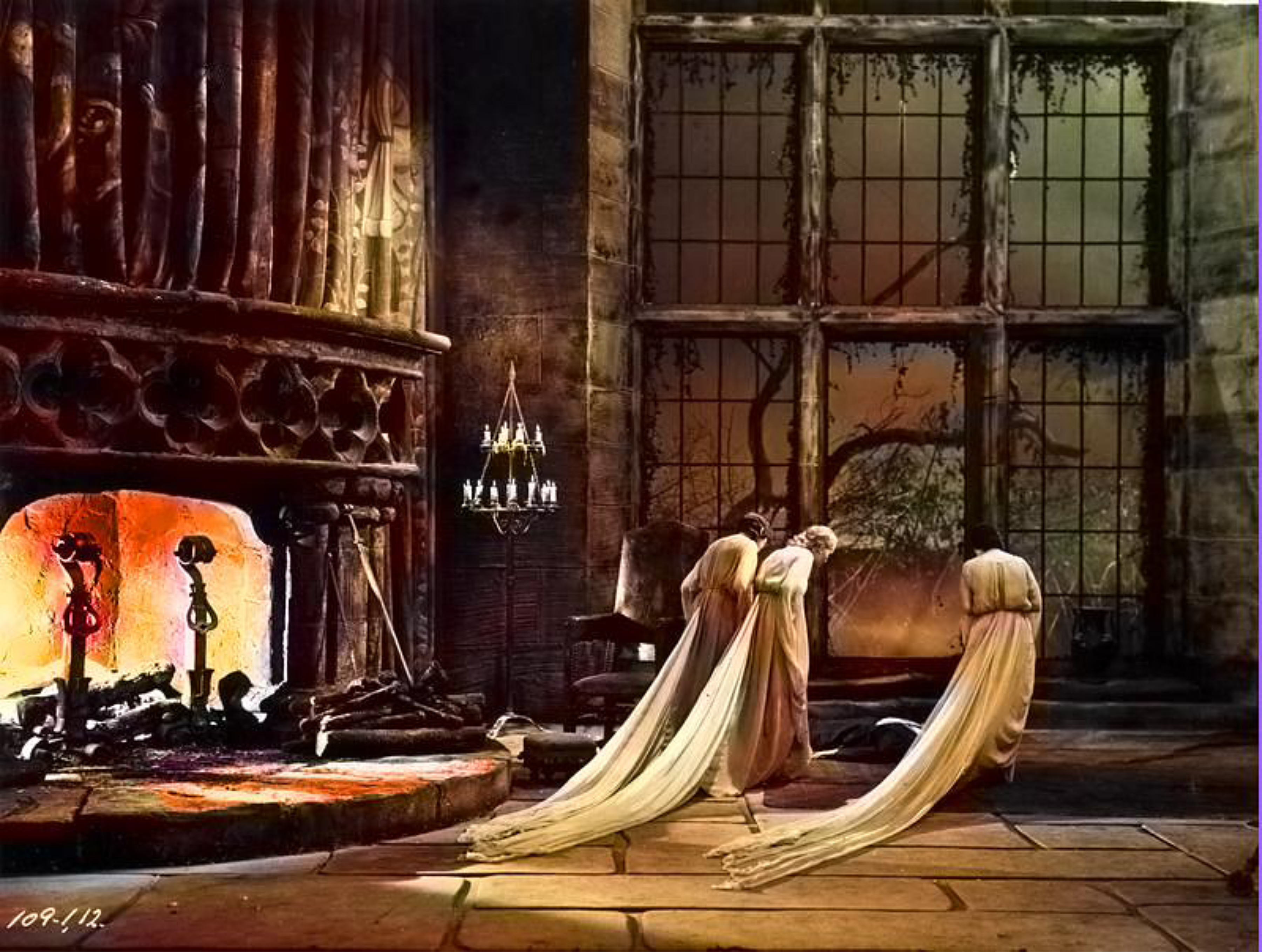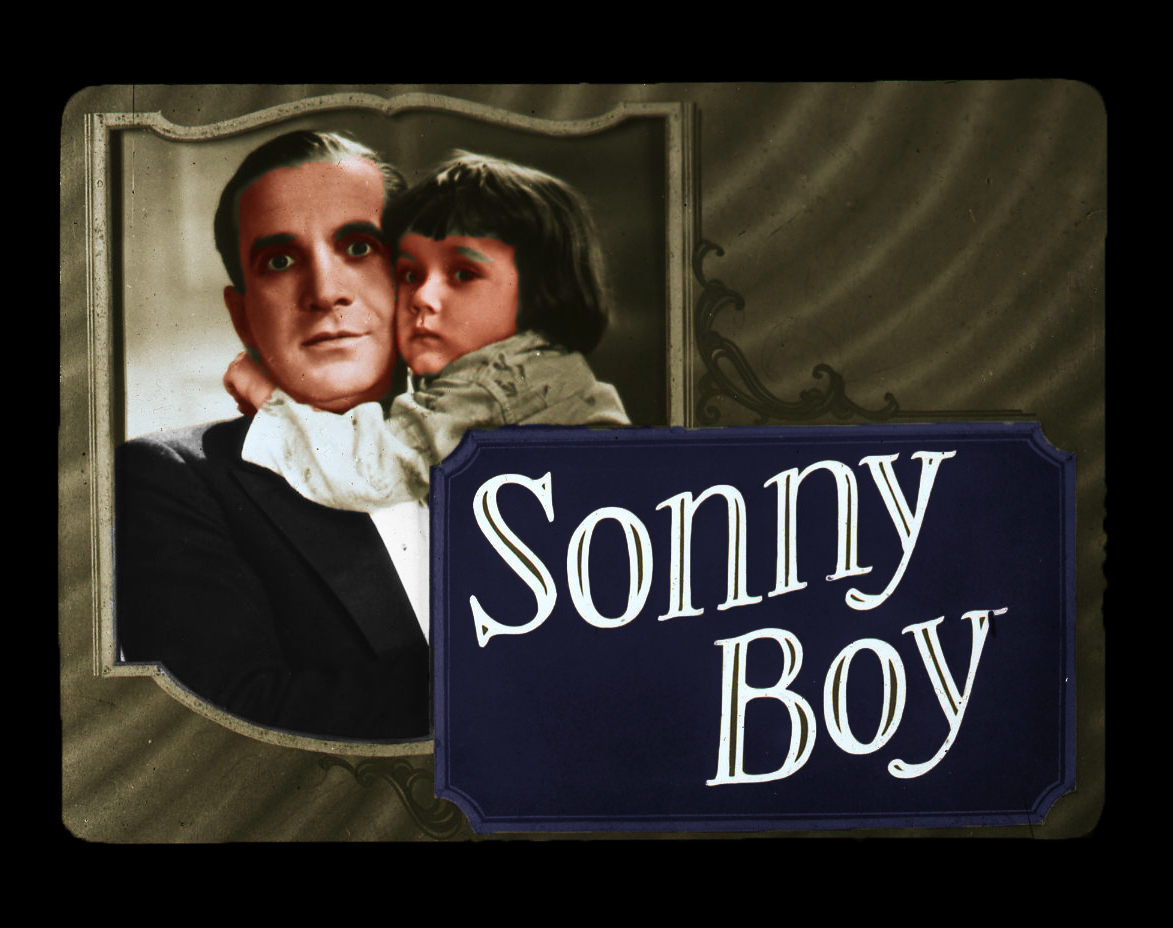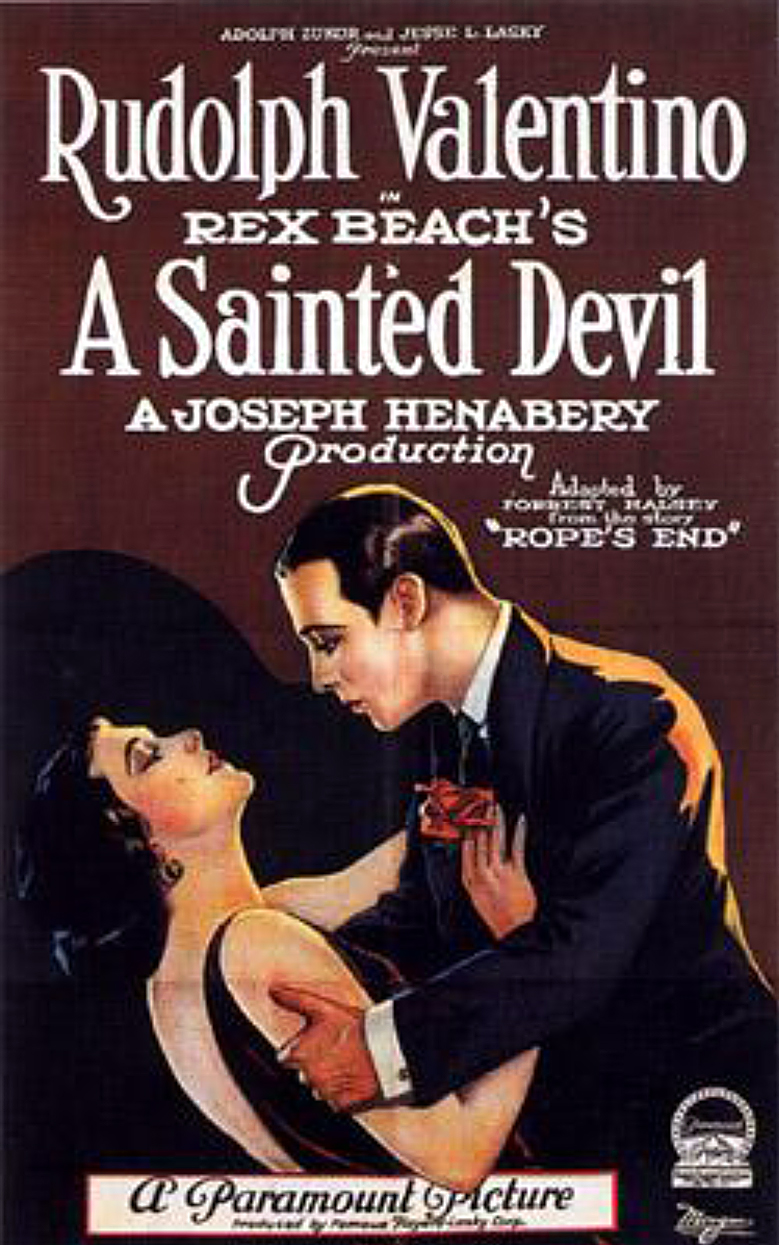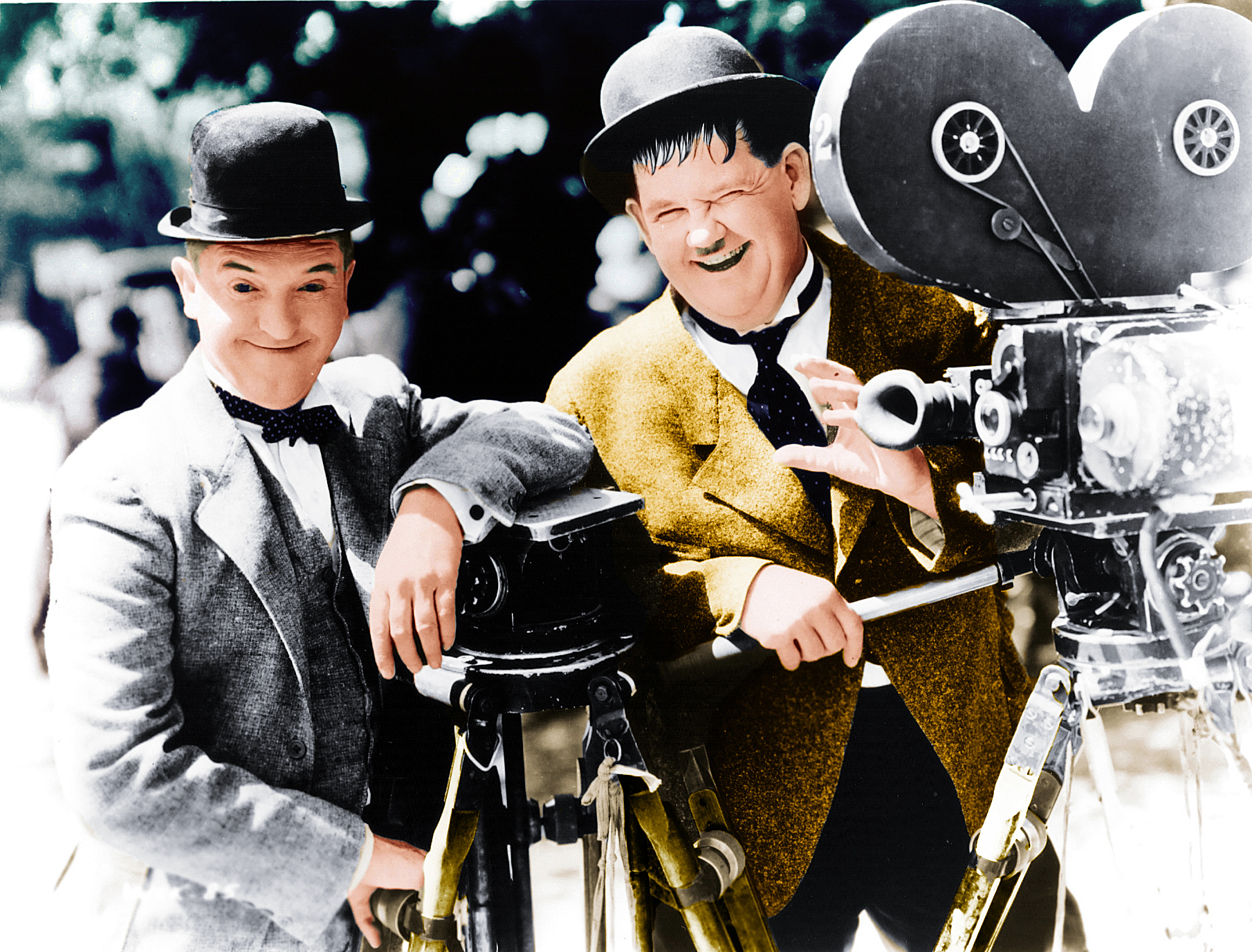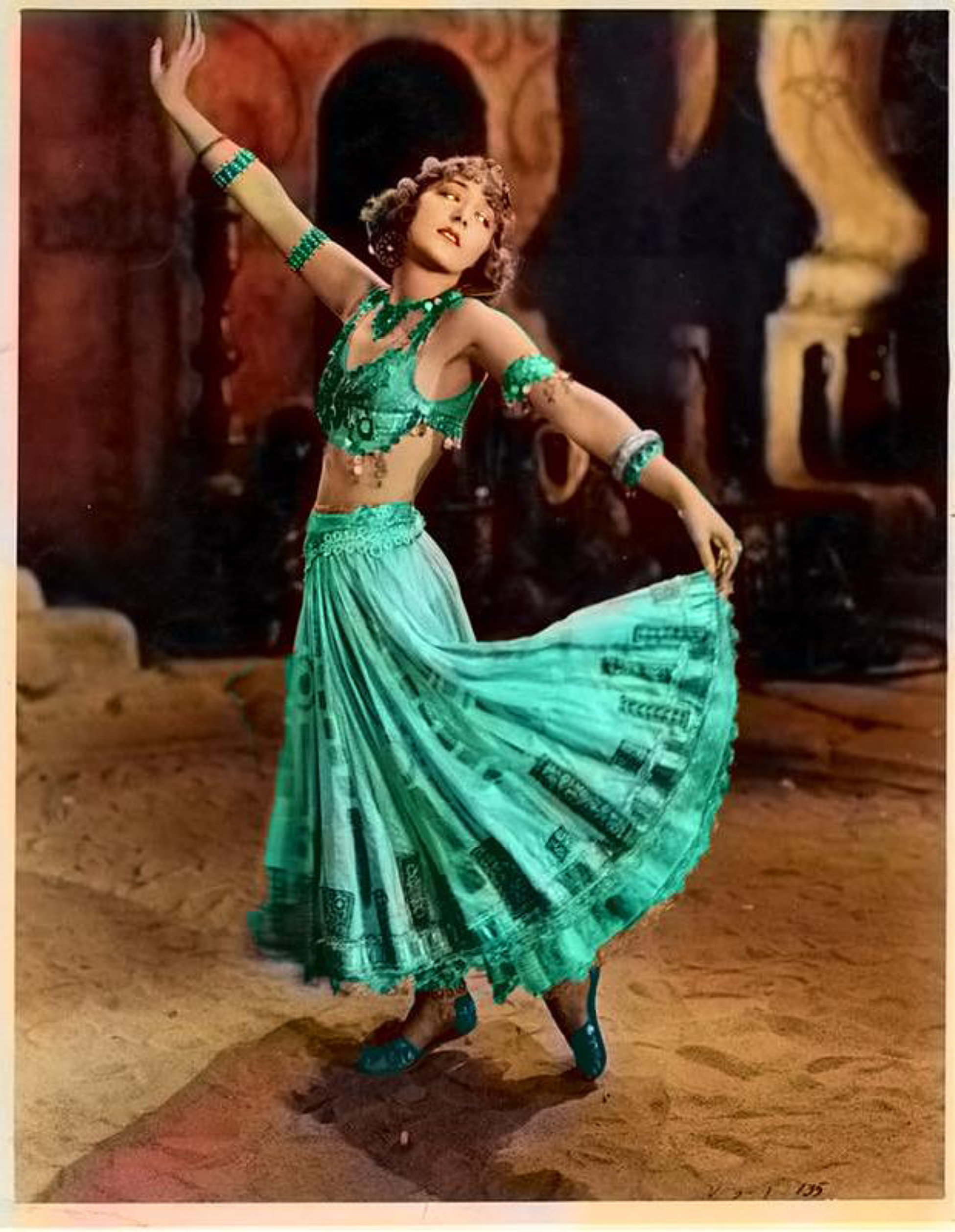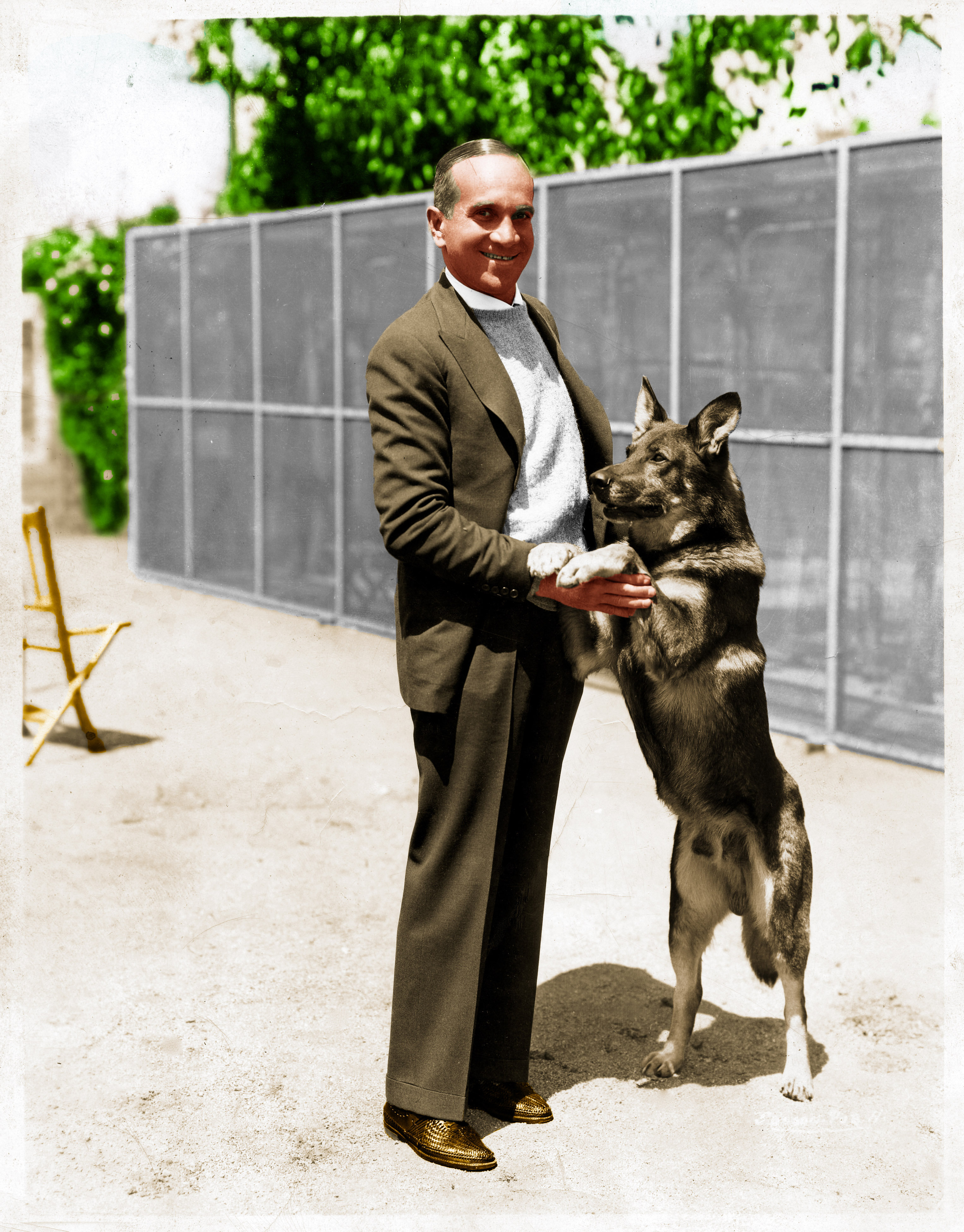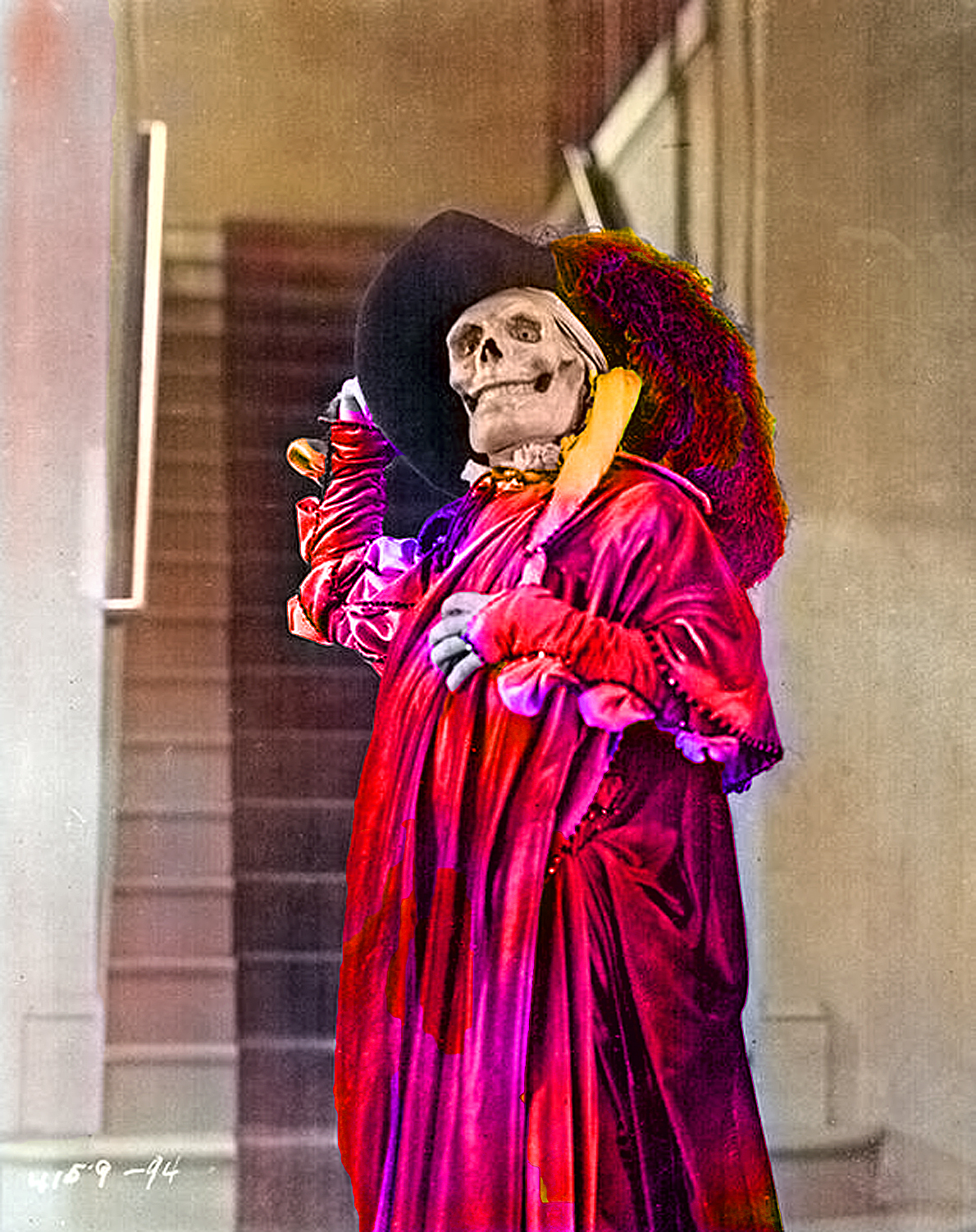For those among us who would like to draw or paint, but just don’t have the ability even if our life depended on it – I’m raising my hand here – AI or Artificial Intelligence has come to our rescue, at least to some extent. I tried using software called BeFunky and found it very user friendly and basically intuitive. I worked with this software a couple of years ago to publish four graphic novels based on lost silent films. Then I just wanted to convert photos into comic book style art. The project turned out well, comparatively speaking.
After a layoff from using AI software “art” I decided to revisit BeFunky to find out how it handled imitating an oil or a watercolor portrait. The results aren’t bad, maybe not so good either, but for people like me this is undoubtedly my only passport into the realm painting. The software is not entirely automatic, and I can control the amount of “painting” performed by BeFunky. Here are the results so far:
My first subject was the immortal Lon Chaney Sr. using a well-known portrait from LAUGH CLOWN LAUGH (1928):
I actually received a few compliments on my Lon Chaney Facebook page (Lon Chaney Man of 1,000 Faces).
Thus emboldened, I soldiered on with Rudolph Valentino in another well-known portrait from THE SON OF THE SHEIK (1926):
Again, I can report that a few kind souls on my other Facebook page (Silent Films Today) provided kind words for my efforts. Nobody said, “Cease and desist.”
I was encouraged still further so I turned to one of the great opera stars who became quite successful in silent films – Geraldine Farrar. Among her great hit films (now on DVD) are CARMEN (1916) and JOAN THE WOMAN (1917), both directed by Cecil B. DeMille.
I posted this on my third (and last) Facebook page, Early Opera Recordings: 1900-1940. Either people were becoming immune to these images, or I was really finding an audience for my pseudo-paintings.
Grateful for whatever favor I might be finding, I returned to Lon Chaney as my sort of good luck charm and produced this image from his last film (and first and only talkie), THE UNHOLY THREE (1930):
Not wanting to lose my momentum, I turned next to the great German star of silent and sound films, Conrad Veidt (THE CABINET OF DR. CALIGARI (1919) and CASABLANCA (1943):

This portrait is from the Technicolor film, THE THEIF OF BAGDAD (1940).
I wanted to be fair to the ladies so I thought the immortal Gloria Swanson would be a good choice. Besides I actually met her once and watched some of her films while seated next to her:
Perhaps a musical comedy star of the stage and films should be recognized so I turned to Al Jolson in an exceptionally smart portrait:
By this point I began thinking that this, whatever you want to call it, may have a future so I decided to encore another interesting image of Conrad Veidt. Here he sports a rather contemporary 2020s beard while reciting his lines from Berlin across a trans-Atlantic telephone hookup with Universal studios in Hollywood. The studio was adding a few “talkie” scenes to his silent, THE LAST PERFORMANCE from 1927, that was being reissued as a “part-talkie” in 1929:
Marion Davies was a Ziegfeld Follies star who became a popular films star in 1917 and was still starring in big films twenty years later. Her long-term relationship with publisher William Randolph Hearst captured the public and long after Marion’s film career ended she was always good copy for the newspapers:
Well, let’s have one more painting of Lon Chaney but this time as himself. We might call this the 1,001st Face:
Perhaps now you’ve been inspired to try your hand – actually to try your PC – and venture into this brave new world of Art. But I feel guilty if I try to sign my name to any of these works. Perhaps I should do what many great authors and artists have done – use a fictious name, sort of a non de plume. I think I’d call myself “Anthony Iaconelli.” Why would I make up a name like that? Simple – I can initial the paintings with that name I would still be truthful. My autograph would read, “AI.”
